Affiliate Disclosure: If you buy something through some of the links on this post, you won’t pay any extra, but we’ll get a small commission. This helps us keep things running. Thanks for your support!
Experimenting With New Competitive Beyblade Formats in Toronto
On September 13th, 2020 the Toronto community gathered for Justin Thunder Cloud’s Skateboarding Adventure at High Park, our first-ever WBO Burst Limited Format and our first real shot at the WBO’s new Pick 3, Choose 1 Battle Format.
This event was experimental and unranked in nature due to this. There is a lot during the course of this event that we learned which could affect the rules and implementation of these formats moving forward before they become permitted as ranked formats on worldbeyblade.org.
Read on below to learn what these formats are, my impressions of them after this event, and what pieces we might want to tweak or revaluate.
We also hosted the ranked Burst Format event Justin TC’s Birthday Bash later in the day. Check out my report for that one here!
Tournament Details
- Date: September 13th, 2020
- Location: High Park – Toronto, ON
- Format: WBO Burst Limited Format – Ranked (Rulebook)
- WBO Event Page
- Challonge Bracket
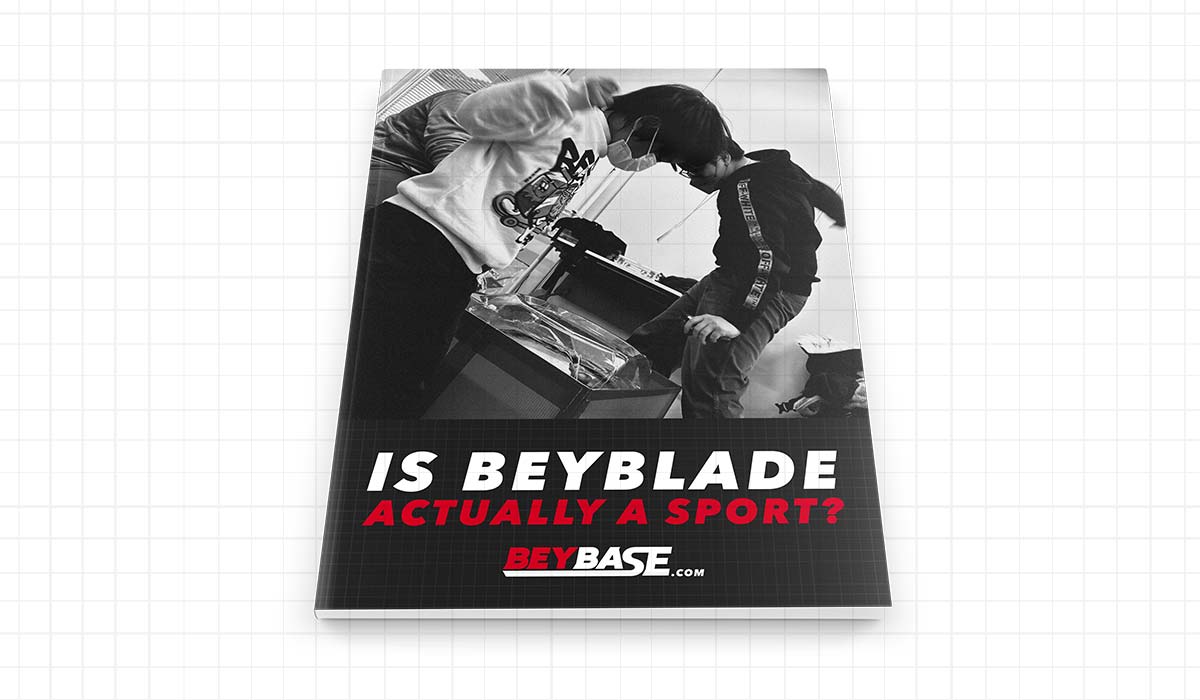
25 years. 4 generations. And we still don’t know: is Beyblade a sport? A toy?
I wrote a 100 page article to answer this question.

Sponsored: Order the newest Beyblades at malloftoys.com!
Heads up: If you buy something through Mall of Toys, you won’t pay any extra, but I’ll get a small commission. This helps me keep things running. Thanks for your support!
First Stage Report – Justin Thunder Cloud’s Skateboarding Adventure
Justin Thunder Cloud’s Skateboarding Adventure was played with 7 players using the Round Robin tournament format.
The top four players advanced to the final stage.
No-Shows & Evaluating WBO Club Format
There were two players confirmed on the attendance list who did not show up and provided no notice of this.
The WBO does have guidelines which will permit them to be warned.
However, especially given the smaller tournament caps during this era of COVID-19, it has become more critical than ever that people who sign up for a tournament show up.
If you sign up for a capped event and don’t show up, you’re effectively taking away a spot from someone else (especially during COVID-19 when walk-ins are not being permitted) and creating problems for the Organizers.
As a result of the two no-shows, we were unable to host a regular unranked WBO tournament, which would grant the ability for the top three players to be awarded with Gold, Silver, and Bronze Bits for their profile on the website. You need at least 8 to access this.
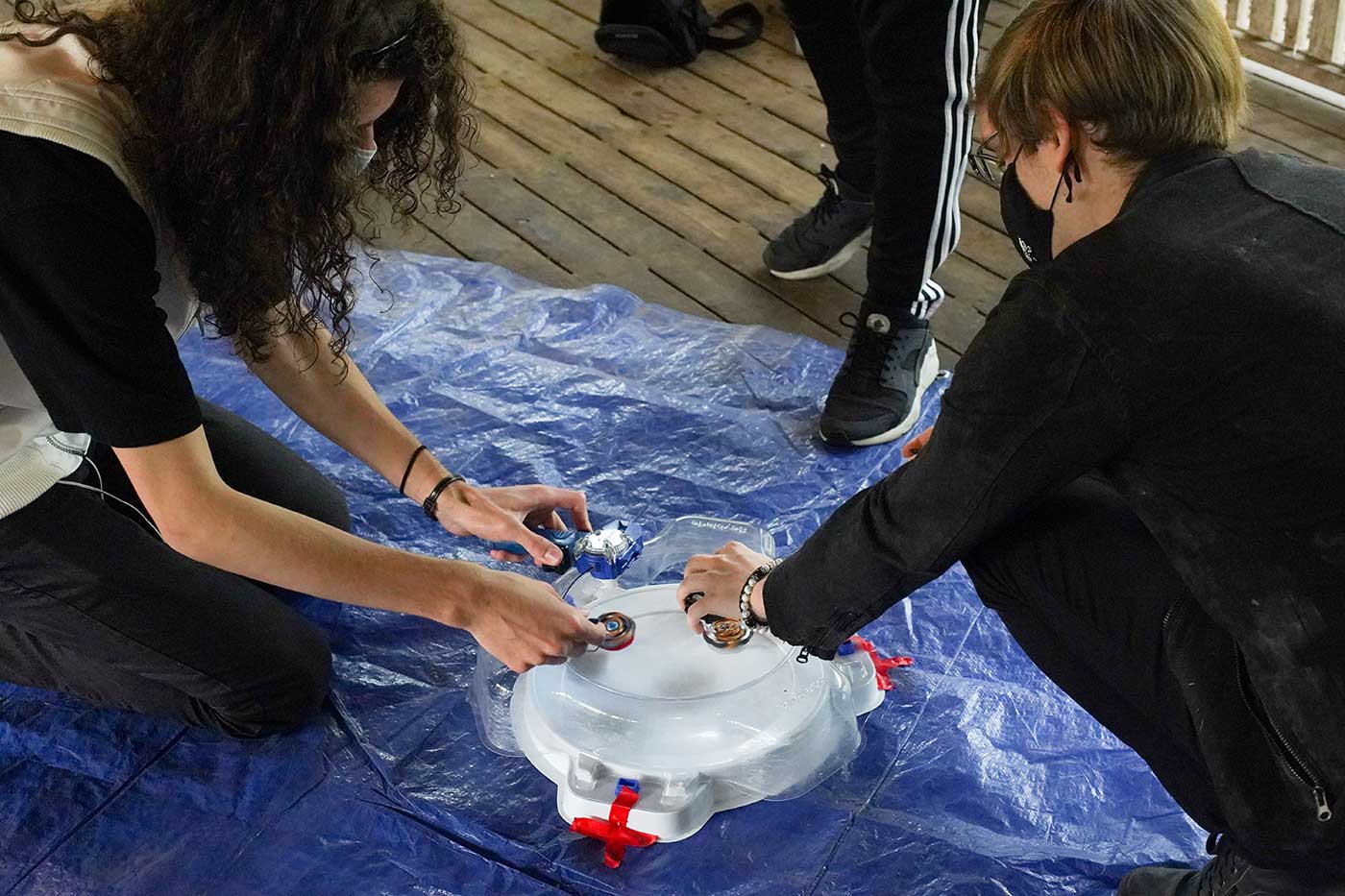
When you have less than 8 players, Organizers must use Club Format. You can read more about it under “Club Type (4-7 Players)” in the WBO Organizer’s Guide.
The only formats available in Club Format are an Unranked Winning Streak Format and Unranked Round Robin Deck Format.
However, because the entire purpose of this event was to try the WBO’s Pick 3, Choose 1 Battle Format we all agreed to use it anyways and take the top four players to the finals (and had hoped one of the two other no-shows would come at some point and make this a total non-issue, but they never did).
Given that all players agreed to it and given the path we’ve set ourselves on to becoming more flexible and open to different methods of playing Beyblade through Project AIDA, I’m hopeful that the WBO Organized Play team will still permit this event to be treated as an official WBO Club Format event.
With this, I also believe it is worth taking a look at the official parameters of WBO Club Format at some point in the near future to make sure that they are still reflective of the openness and flexibility that the WBO is moving towards–especially for unranked events–as an organization.
Some minor updates were made to it in May of 2020, but more should be done.
If an event is held using a legitimate and fair format agreed upon by attendees, it should probably be permitted for unranked events even if the format had to be tweaked on the day of the event without prior approval.
To me, Club Format is an envinronment perfect for experimentation, flexibility, and fun due to its unranked and small nature. So, our framework should probably better reflect this.
Tournament Participants
Participant List
- Kei (WBO Rank #1)
- Justin TC (WBO Rank #2)
- 1234beyblade (WBO Rank #4)
- BladerBeast (WBO Rank #7)
- Henwooja1 (WBO Rank #9)
- Tempest546 (WBO Rank #180)
- Smartsin the6 (WBO Rank #1781)
Pick 3, Choose 1 Battle Format Impressions
The P3C1 battle format was conceived by Wombat and proposed back in March of 2019.
It was later implemented officially for unranked WBO events in November 2019.
Pick 3, Choose 1 (P3C1) Battle Format Rules
- When a match between two players is announced, each player assembles three combos with no repeating parts in secret.
- After both players have their Beyblades ready, they turn around and present their combinations to their opponent. At this point spin directions or modes on parts which require disassembly can no longer be changed.
- Each player is given 30 seconds to identify the Beyblades presented.
- Then, each player turns around and makes their final selection of which Beyblade they will use from the three combos they presented to their opponent in secret. They also choose their launcher.
- The match then continues as a normal match between the two selected Beyblades.
The Inherent Strategic Advantage of P3C1 vs. Double-Blind
To me, there is no question that this format is more strategic than the traditional double-blind battle format that has been used throughout the history of both the WBO and all other Beyblade tournaments official and unofficial around the world.
In Beyblade, information is power.
Empowering players to make decisions based on a bigger set of information enables those who have deeper understanding of how combinations interact with each other to succeed.
It’s the same with the WBO Deck Format used in the final stage of our events.
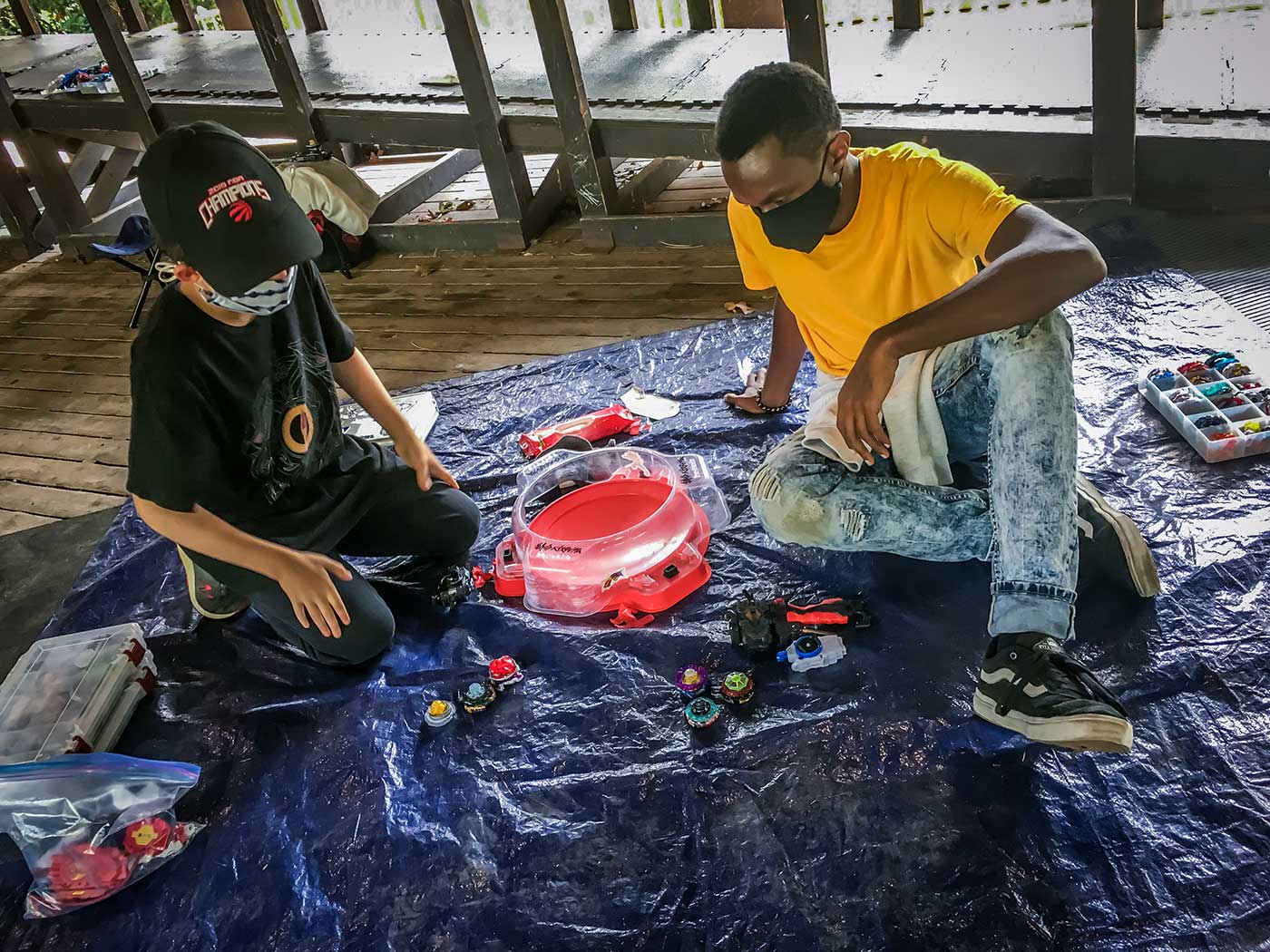
The general reaction from all seven players who participated in Justin Thunder Cloud’s Skateboarding Adventure was extremely positive for these reasons.
There is still luck involved in P3C1, but one of the biggest issues with the double-blind battle format where both players simply pick one Beyblade in secret and then battle each other has been that without any information about your opponent beyond what they might have done in the past, it’s difficult to make a truly informed decision about what to use.
Uncertainty will always be a part of Beyblade because you can’t continually allow one player to choose after another as it would become too easy to counter them.
But with P3C1, players are finally able to make decisions in a non-Deck based format based on real-time information. Decisions no longer need to be based solely on theory and historical precedent.
But How Does P3C1 Scale to Larger Events?
With the above in mind, the decision to allow P3C1 for ranked events should seem easy.
However, the main issue which has stuck with me since the proposal was originally made–and was also highlighted in a conversation I had with 1234beyblade at this event–is … how does P3C1 scale to large events?
Is double-blind better in certain circumstances for organizational purposes?
This is critical because the answer will have a direct effect on what the WBO Ranking System will represent moving forward and how players will be permitted and expected to participate in it.
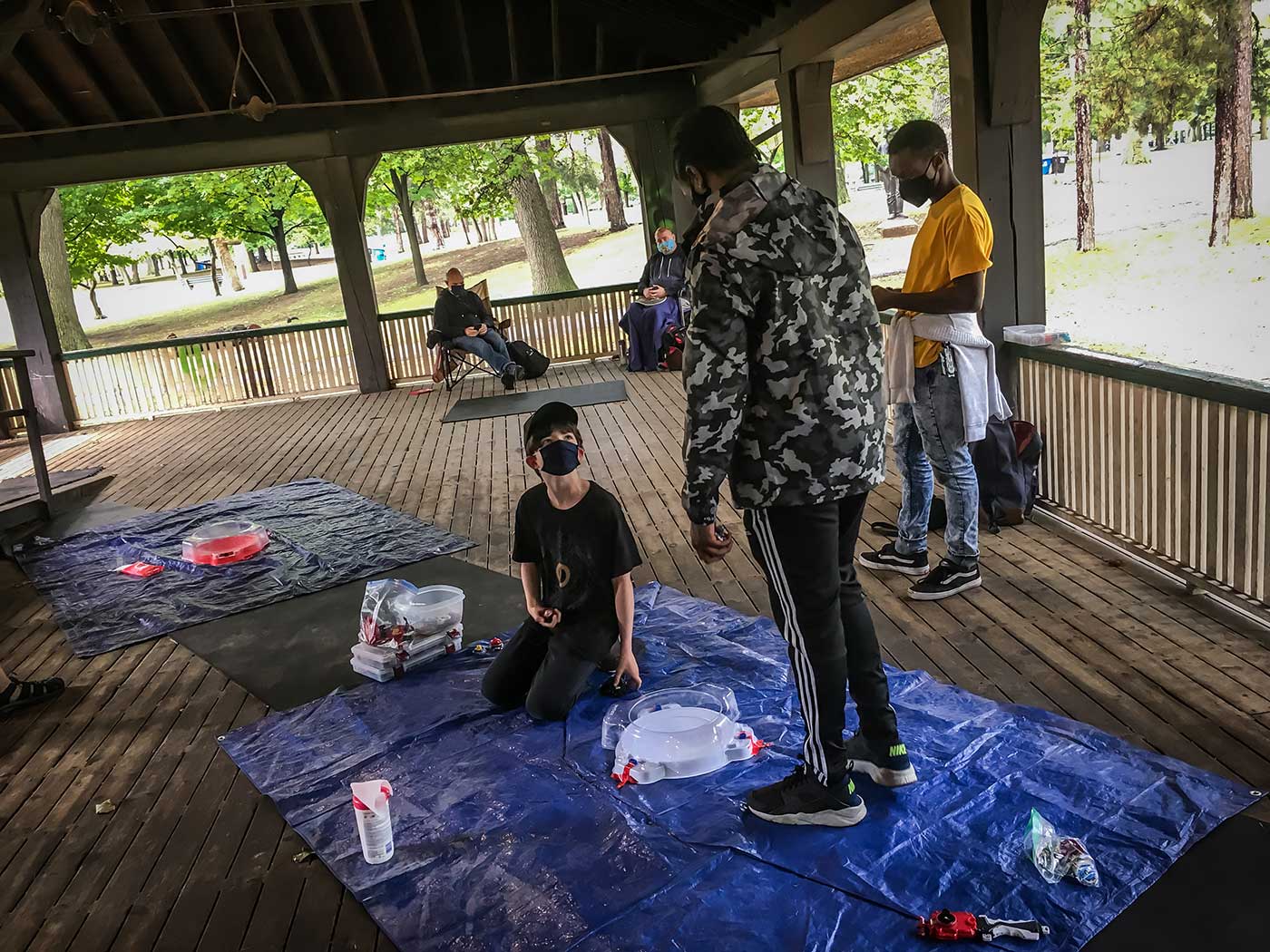
Time is a Luxury Afforded to Small Events
In a seven player event, using a battle format which takes longer than double-blind (by virtue of the fact that each player has to select and construct not one, but three Beyblades and then have time to inspect their opponent’s selections), is not a problem. Time is not a problem.
In a 120+ player event, time is the biggest obstacle (as I am painfully aware of). Especially given that multi-day events are unheard of in Beyblade.
In the original proposal thread I raised this concern:
To me, being “forgiving” is a luxury afforded by smaller tournament sizes. At huge events, unless you want to run a two or three day event, time becomes the biggest obstacle. So, Single Elimination in some capacity becomes necessary depending on the circumstances.
This is why in the proposals I’ve been making internally lately I have been trying to estimate how much time it actually takes to complete a single match and every aspect of management that goes into it (calling the names, waiting, getting the result, inputting the result, etc); the number of matches in a tournament has a direct correlation with the tournament length, so if we can estimate match length we can estimate how many matches can be fit into one day, and ultimately, craft a selection of formats that works based on that.
The WBO Staff has been pushing for this format to move forward into ranked and to remove double-blind as an option entirely.
But I do not believe that the fundamental logistical issue with Pick 3, Choose 1–the time it takes–has been fully considered.
Increased Complexity Should Be Added With Care
It’s also worth mentioning that it is more complex than double-blind, which could become more difficult to communicate properly and efficiently–especially to kids and parents–as events become larger.
WBO Deck Format has been such an excellent addition to WBO Organized Play because the spike in complexity was offset by the fact that:
- It can only be played in the finals.
- The finals are standardized in terms of the number of matches that will be played.
- Generally, the finals are populated with players that are more skilled.
- Generally, those participating have enough Beyblades to construct a full deck.
Adding Pick 3, Choose 1 indiscriminantly to the first stage of all events might be irresponsible because it ignores the inherent complexity of the format and of hosting larger events.
We need to more deeply analyze the logistics of P3C1
What I’d like to see is a deeper analysis and estimate of the actual time difference between double-blind and Pick 3, Choose 1 matches and how that directly translates to the length of an event while considering all of the other factors mentioned in the quote above.
At the very least, it seems like a foregone conclusion to me that P3C1 can’t be mandatory at large events (think 50-120 players) using something like Swiss or Double Elimination tournament structures.
I enjoyed Pick 3, Choose 1 on a competitive level at this event, but strongly believe that we need to be more flexible moving forward when it comes to allowing P3C1 or Double-Blind. And careful about how such changes would actually impact all types of events that are realistically conceivable.
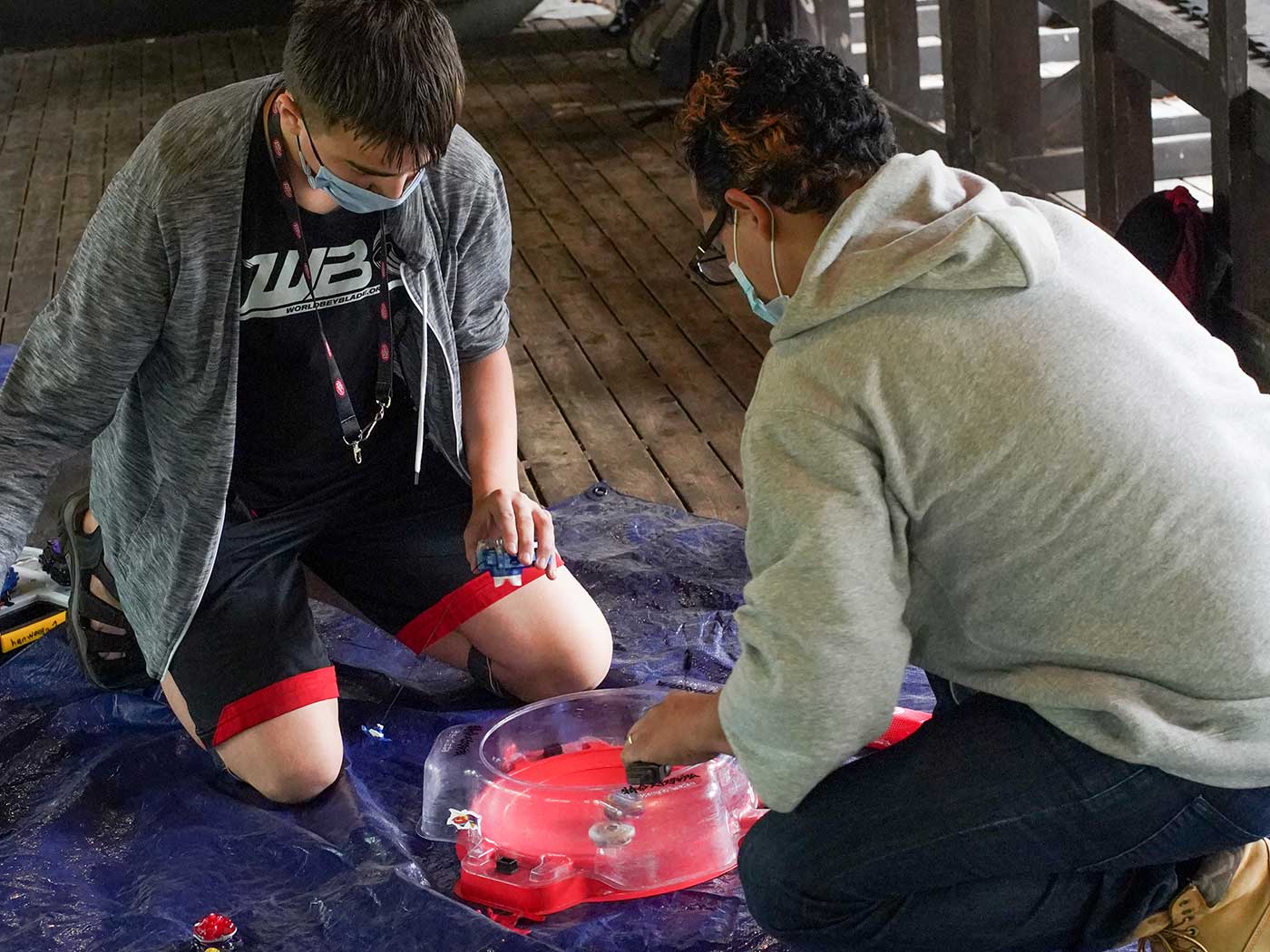
I understand this does pose questions as to whether the WBO global rankings themselves should just be limited to one battle format or not.
I don’t have the answer to that at the moment.
In an ideal world everyone would play using the same format in the first stage, but I’m not sure I can envision a point where we can fairly impose P3C1 as mandatory for all events regardless of size and time available.
Perhaps the solution is simply to make P3C1 mandatory for smaller events, but allow it to be an option alongside double-blind at a certain point for larger events.
Maybe the inconsistency is something we have to live with.
The value of unranked play
Or perhaps, ranked needs to become more exclusive and limited to event conditions which can realistically implement the Pick 3, Choose 1 battle format?
As was announced alongside Project AIDA, the WBO’s new vision moving forward is to encourage others to “Play Beyblade, together”.
This statement has deep meaning.
One way to look at it is that it acknowledges the infinite number of ways in which people can enjoy playing Beyblade. It could be with your friend at home. It could be on the school playground with your friends. It could be with the WBO ruleset. It could be with the WBBA ruleset. It could be ranked. It could be unranked.
None of these is inherently better than another.
As a result, the WBO aims to support not only its own Organized Play, but all play in some fashion in the long run.
Within the WBO’s own Organized Play, we have historically placed a great emphasis on ranked play.
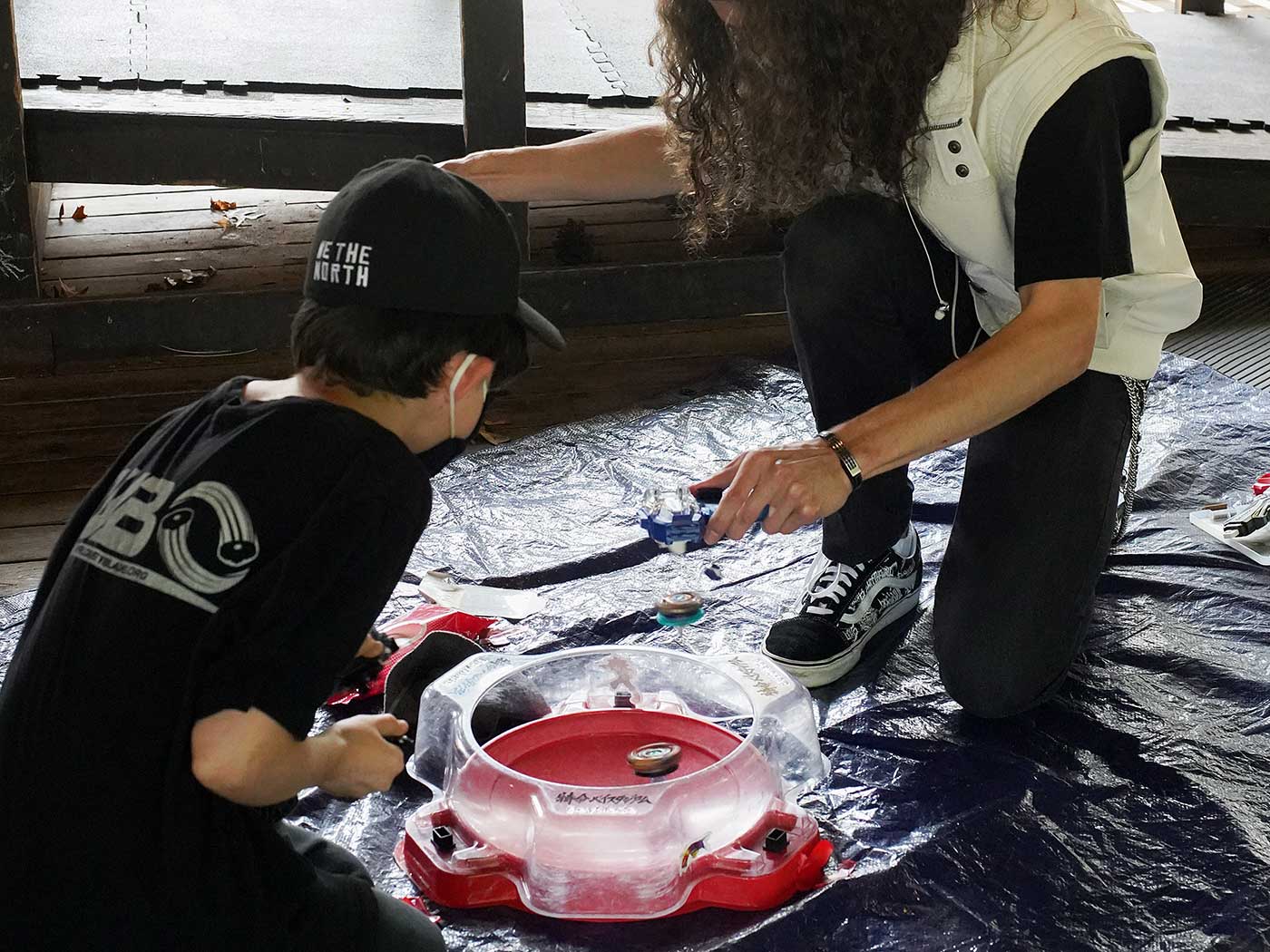
But ranked play comes with an inherent pressure to it which might not be attractive to everyone. And it might not be attractive all the time to those who do love it, even like myself.
Sometimes I just don’t want to feel like I need to test for dozens of hours before a tournament in order to have a full understanding of the metagame and reasoning for whatever choices I plan to make at the ranked event.
So, when we take a step back and look at things, we can see that unranked play actually carries great value.
There’s no pressure and players are able to both focus on having fun, experimenting, and getting a real feel for how matches play out in a tournament environment.
The best example of this to me lately was Toronto’s first Beyblade tournament after seven months, BE A HIRO.
This unranked event served as a great opportunity for players to re-introduce themselves to the tournament environment and prepare for our following ranked event a few weeks later, Justin TC’s Birthday Bash.
With this in mind, an idea that has been thrown around internally recently comes to mind. It’s about how, if we are promoting and making unranked play more accessible on the WBO, perhaps it should follow that ranked play is a bit more exclusive and hardcore?
The fact of the matter is, most Beyblade fans don’t enter the game caring about their worldwide rank. Encouraging new players (and new organizers as well, for that matter) to jump into ranked play might be counterintuitive because it might be difficult for them to find success.
It also bloats the rankings and over time allows them to feel less … personal? Maybe that’s the word.
If ranked is more exclusive, hardcore, and less frequent, there will be less players ranked, but those who are ranked will most likely still pretty clearly represent who the best players are. This is because hardcore players will seek out the opportunities to participate in ranked.
It also might increase the level of competition in ranked events if unranked events are more common for the above reasons I mentioned about being able to experiment and prepare in a more ‘real’ environment than testing at home.
In this way, unranked can become a gateway to ranked.
If the idea is to make Pick 3, Choose 1 mandatory for ranked events, the answer to making that work might be limiting ranked events to those under a certain amount of participants or to those where the Organizer can demonstrate they will have enough time at their venue to properly complete a larger event with P3C1 in effect.
About Burst Limited Format (BSL)
In Burst Limited Format, a variety of parts are banned from use.
It has been designed primarily around the Beyblade Burst God Layer System alongside other parts within a similar weight and power class, such as most newer Hasbro releases in their Beyblade Burst Turbo and Beyblade Burst Rise lines.
Learn more about BSL and its development in the official Burst Limited Format announcement on worldbeyblade.org.
BSL Ban List
The Burst Limited Format ban list is subject to change (in fact, some GT Layers + Gen Weight were recently unbanned), especially during the experimental period.
But as of this tournament on September 13, 2020, the ban list was as follows:
Energy Layers
✗ Spriggan Requiem/Spryzen Requiem
✗ Garuda G3
✗ Balkesh B3
✗ Kerbeus K4
✗ Turbo Achilles A4
✗ Turbo Spryzen S4
✗ Storm Pegasis
✗ Lightning L-Drago
✗ Burn Phoenix
✗ All Cho-Z Layer System Layers, except:
✓ Bloody Longinus
✓ Buster Xcalibur
✓ Geist Fafnir
✓ Hazard Kerbeus
✓ Left/Right Artemis/Apollos/Aeclipse
✓ Shadow/Shining Amaterios
✓ Z Achilles
✗ All GaTinko & Sparking Layer System Layers (Takara Tomy)
Forge Discs
✗ All GaTinko & Sparking Layer System Forge Discs (Takara Tomy)
Performance Tips/Drivers
✗ Bearing (Hasbro)
✗ Hybrid
✗ Ignition’
✗ Xtend+
✗ All HyperSphere Performance Tips
Closely Contested Competition
The level of competition in this tournament was extremely tight.
Five of the seven players ended with 3-3 records. Tempest546 was the only one with a winning record of 4-2, and Justin TC was just behind the 3-3’s at 2-4.
To me, this could on one hand be indicative of the inherent chaos associated with trying out a new format for the first time.
It felt similar to the first Burst Classic Format event I hosted last year, IT’S TIME TO RIP IT!.
There is always a certain level of excitement and uncertainty present when trying a new format; so much is unknown and as a result, players need to experiment.
On the other hand however, it could also be reflective of how competitive and balanced the format is.
This will be a difficult question to more fully answer until more experimental events have been hosted, the ban list is finalized, and ranked BSL events begin, but nevertheless to me it is a good sign that it was this closely contested for our first event.
Blader Kei’s First Stage Matches
Going into this tournament I did an extremely minimal amount of testing.
Instead, I spent the small amount of time I had organizing my collection so that most of the BSL-related parts would now be kept together in fewer areas throughout my storage cases.
Doing this helped me to get a bit more into the right headspace required for this format and start thinking conceptually about what the best Beyblade combinations might be for the format with the parts available.
It had been a long time since I thought about some of the parts that would be relevant in this format, and the first time for many others that were being thrust into the spotlight for the first time (like Shadow αmaterios or Hercules H4).
I hadn’t been involved much at all with the development of the format myself, so I was diving into this for the first time with a perspective similar to that of a brand new member.
Round 1 – Geist Fafnir 0 Cross Orbit Metal (Justin TC) vs Shining αmaterios 0 Lift Bearing (Kei)
This match wasn’t even close and I was able to win 3-0 thanks to Bearing‘s higher Life After Death/opposite spin performance than Orbit Metal.
Interesting to note that this was my first match and I could already see that players were opting for parts on the heaviest end of the spectrum permitted by the format (Geist Fafnir and Shining αmaterios).
But this isn’t really surprising.
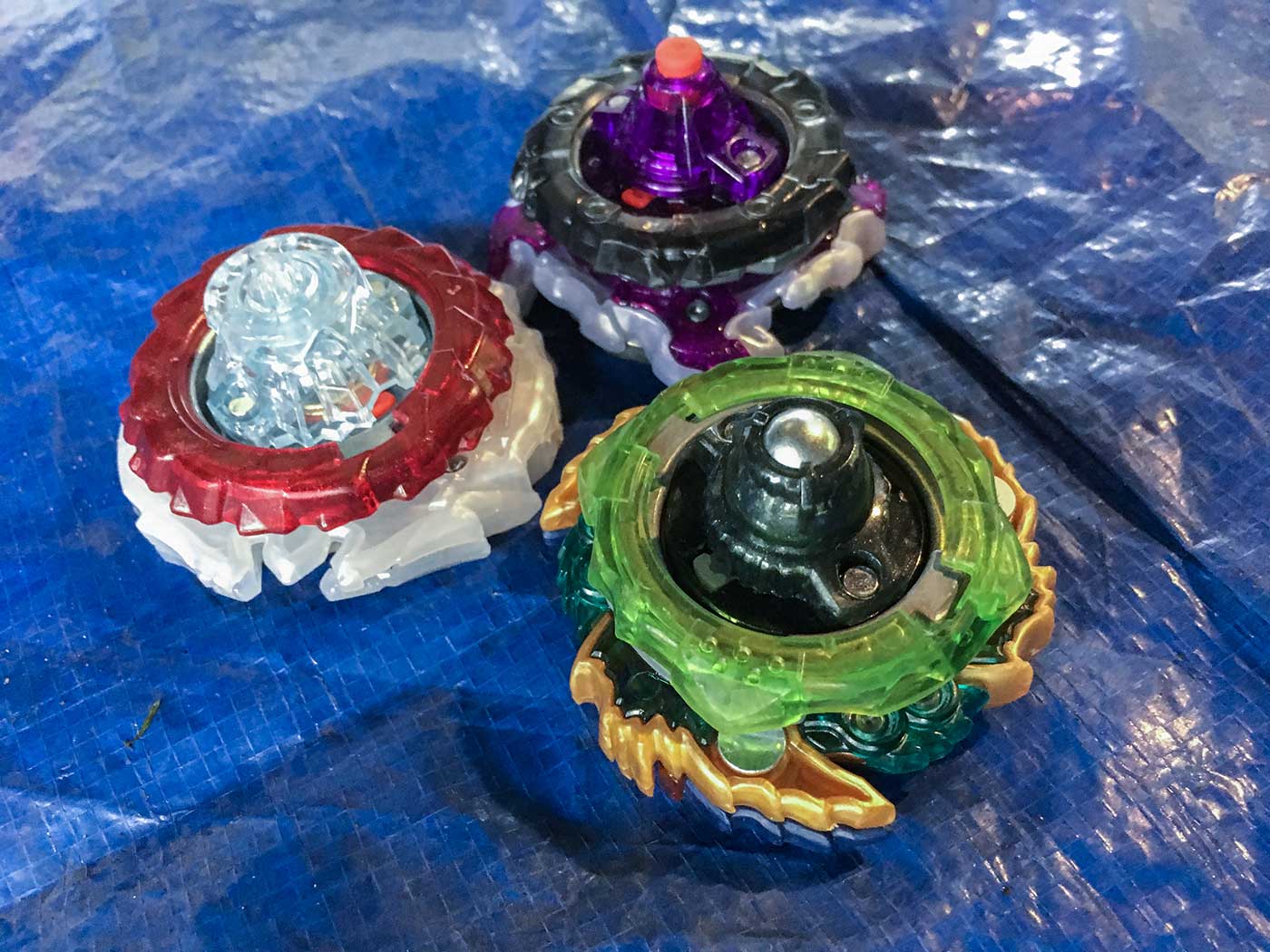
Justin TC’s 3 Picked Beyblades
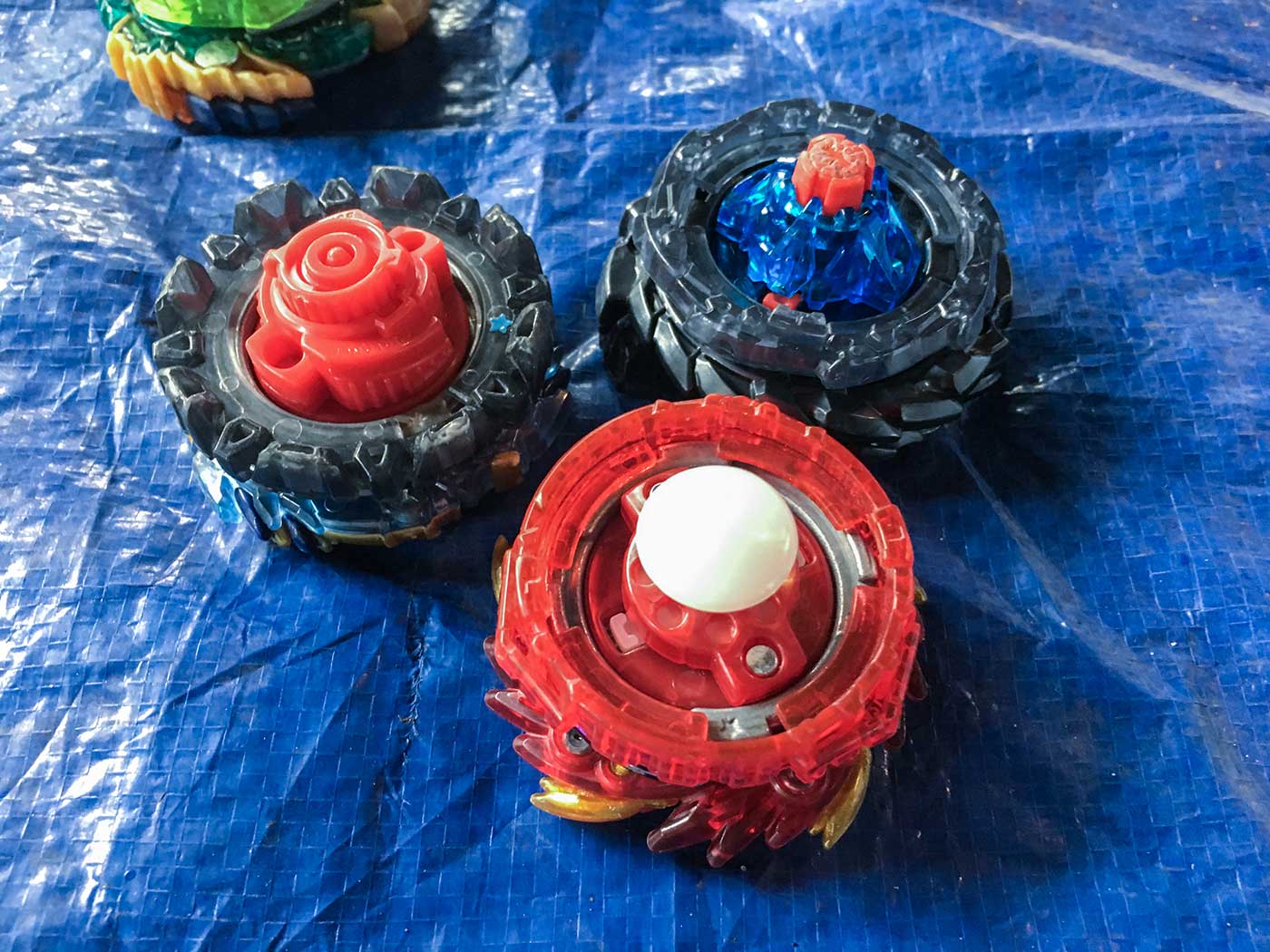
Kei’s 3 Picked Beyblades
Round 2 – Drain Fafnir 0 Glaive Atomic (1234beyblade) vs Hercules H4 7 Expand Atomic-S (Kei)
Super close match due to the similar set ups, but in opposite spin directions.
Drain Fafnir on Atomic is a classic spin equalizing stamina combination from the Beyblade Burst God era and it certainly seems to have a place in the BSL format.
Some people had been hyping up Hercules H4 and Atomic-S for BSL, so I decided to try them out without any prior testing in this matchup. This is the luxury of an unranked tournament haha.
Unfortunately, I mislaunched in one of the rounds and launched too weakly which ended the round prematurely … but either way it was extremely close and 1234beyblade ended up winning 3-2.
Testing the differences between Atomic and Atomic-S is something I’m certainly interested in doing in the future.
If anyone has experience with both of these Drivers, I’d love to hear from you!
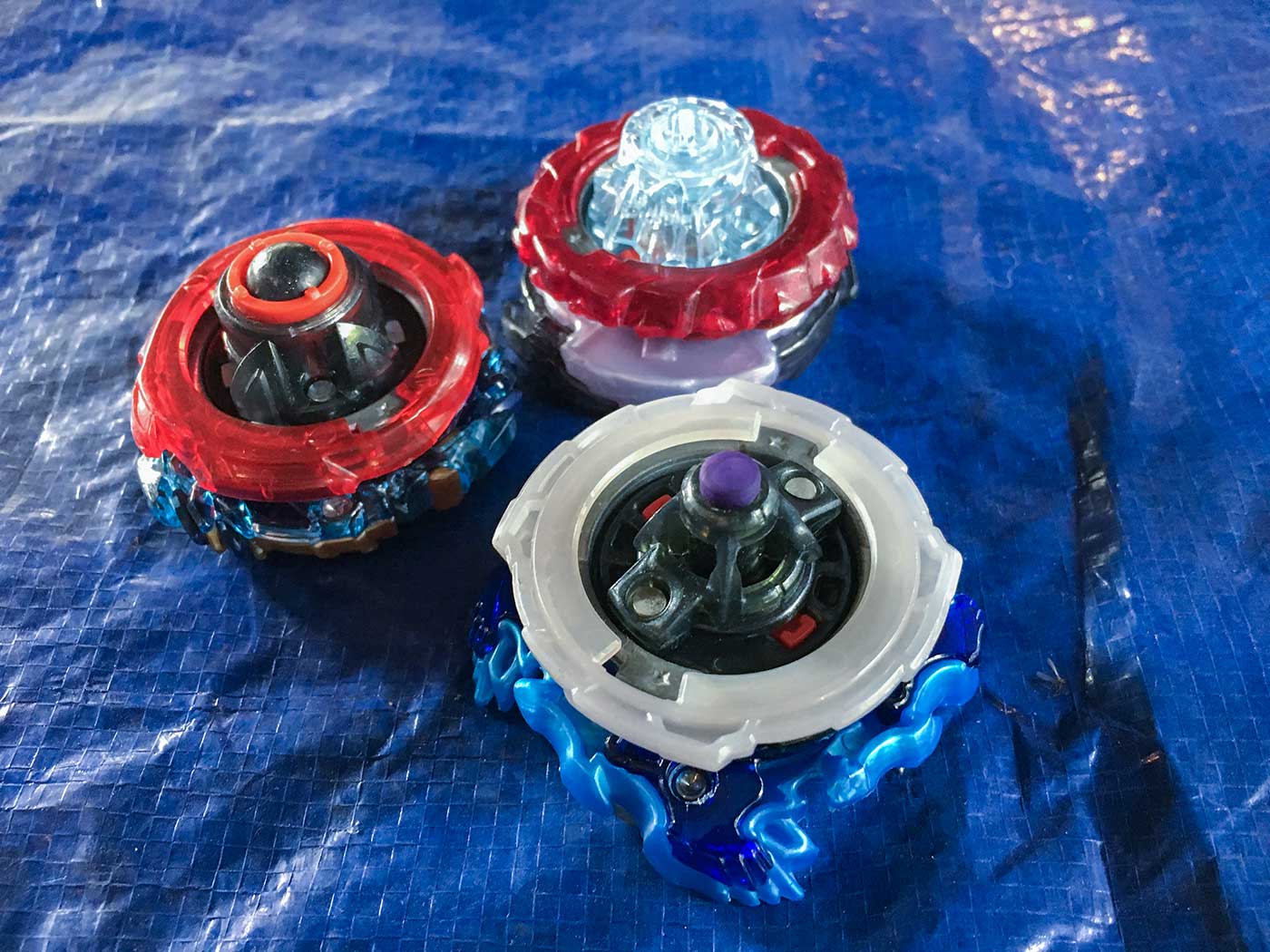
1234beyblade’s 3 Picked Beyblades
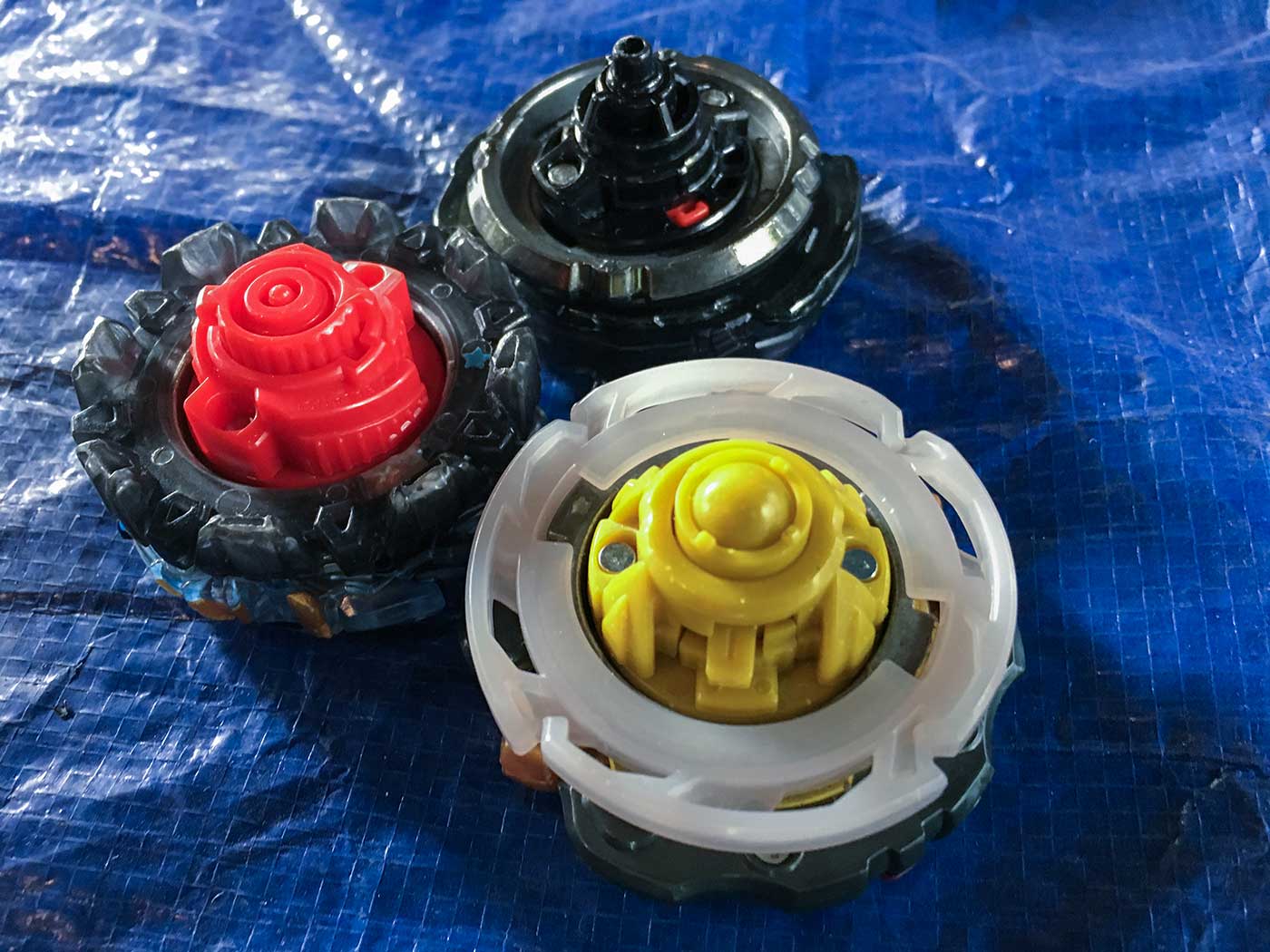
Kei’s 3 Picked Beyblades
Round 3 – Bloody Longinus Generate (BladerBeast) vs Twin Nemesis 0 Expand Destroy’ (Kei)
This battle was intense. Tons of recoil.
I was able to pull through with a 3-1 victory, but that Bloody Longinus Generate combo is one which has been making an impact early on in the life of BSL.
RED NINJA 0829 used it for most of his matches at Limited Time Offer in Pennsylvania back in August, earning himself a second place finish.
It does particularly well against slower left-spin Beyblades, has decent stamina for an attack type, can stall around the ridge well due to Generate, and has decent enough opposite spin performance to OS some low-LAD right-spin Beyblades.
Round 4 – Geist Fafnir 7 Lift Bearing (henwooja1) vs Nightmare Longinus Turn Evolution’ (Kei)
This battle might be one of the ones which sealed the deal in terms of how I feel about awakened (worn down) Evolution’.
I had the right spin direction match-up, but lost 3-1.
henwooja1 made a good choice in using Geist Fafnir on Bearing due to its increased weight and burst resistance over something like Drain Fafnir. He gave up a bit of stamina for this and it worked out for him.
Playing against same spin Bearing might seem like an easy win for an Evolution’ combo like this, but it can be difficult without knowing how the opponent will launch each round due to the fact that Bearing can be launched in the centre or more aggressively to circle the ridge.
Evolution’ can overcome this by circling the ridge and then bouncing off the walls if launched correctly, but it takes a bit of luck and sometimes people don’t give Bearing enough credit for its defensive qualities.
I still really love Evolution’, but you need to pick your spots with it. It’s an incredible Driver, but only in specific scenarios where speed is of greater importance than control.
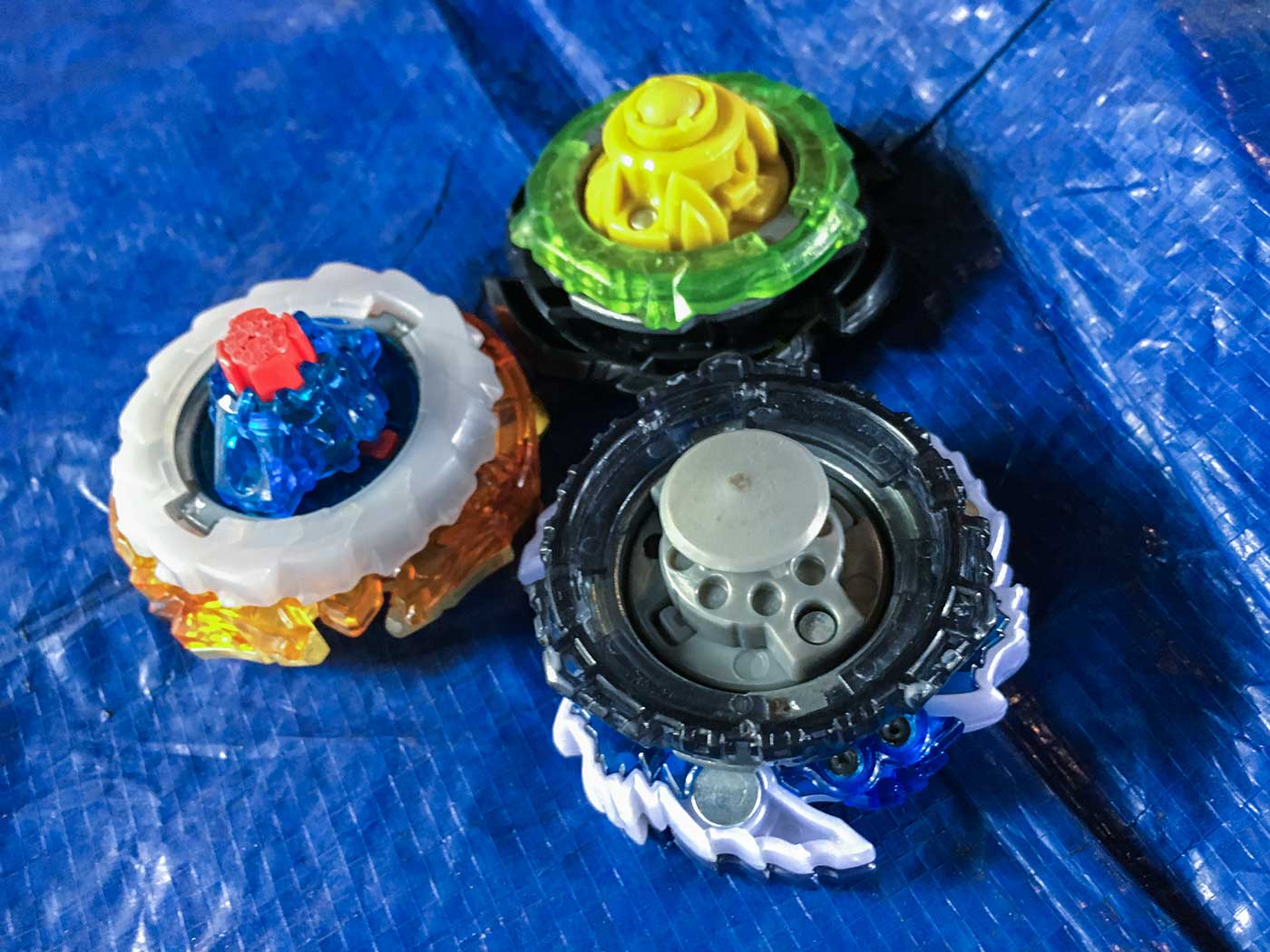
henwooja1’s 3 Picked Beyblades
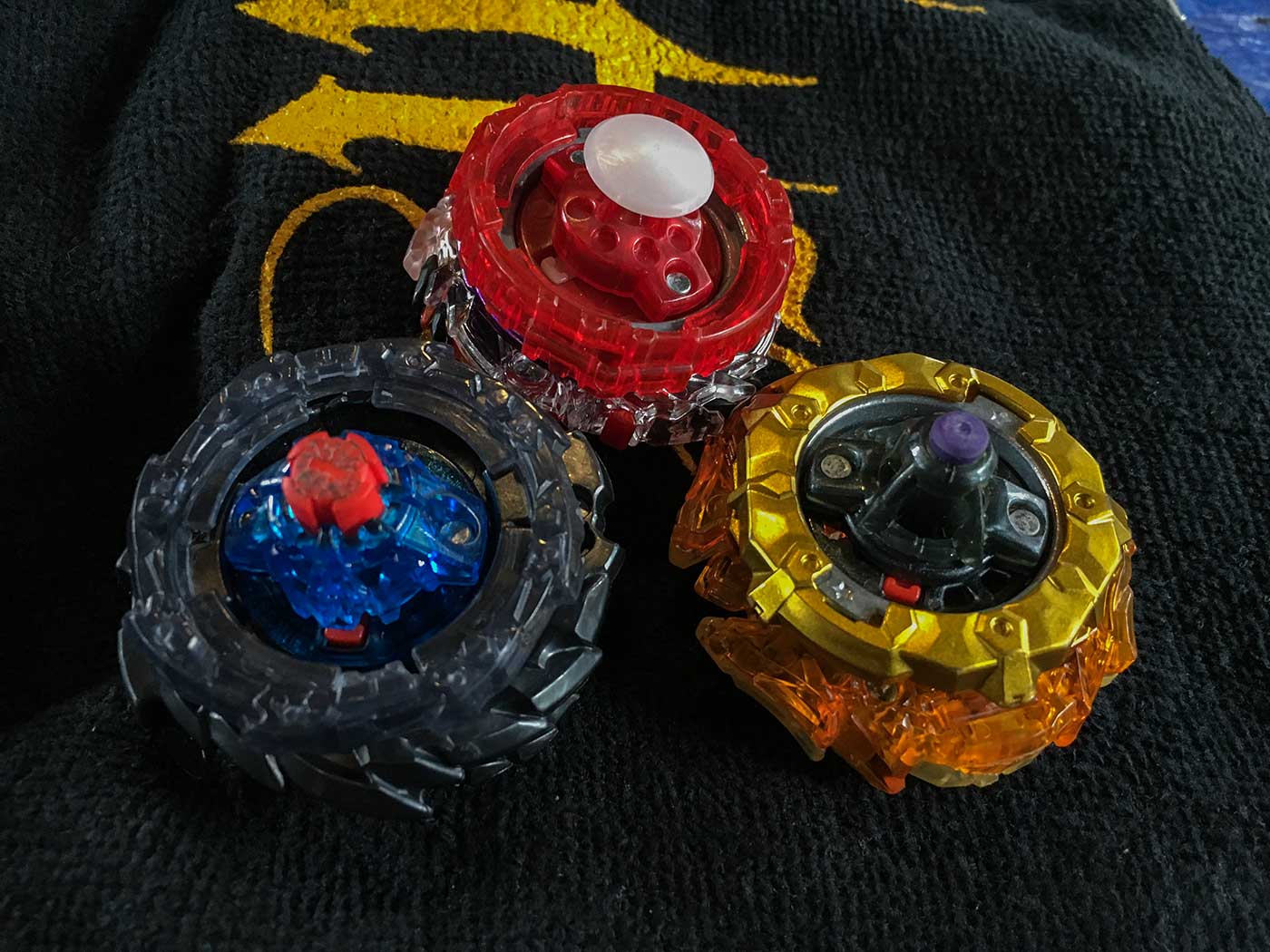
Kei’s 3 Picked Beyblades
Round 5 – Galaxy Zeus 0 Cross Atomic (Tempest546) vs Twin Nemesis 0 Expand Destroy’ (Kei)
I lost this match 3-1.
Tempest546 had been leaning heavily on Galaxy Zeus throughout the day, but also had Drain Fafnir in his selection of three Beyblades, so I was unsure of which he’d go with.
I had included Shadow αmaterios 00 Bump Ωcta has a weight-based defender with maybe decent stamina … but I hadn’t tested the stamina of it so I wasn’t sure how it would interact with gZ or dF.
So, Twin Nemesis seemed like it would give me the best chance. I was also coming off a win with it against BladerBeast, so it seemed like a decent choice and would have a chance against all three of Tempest546’s choices.
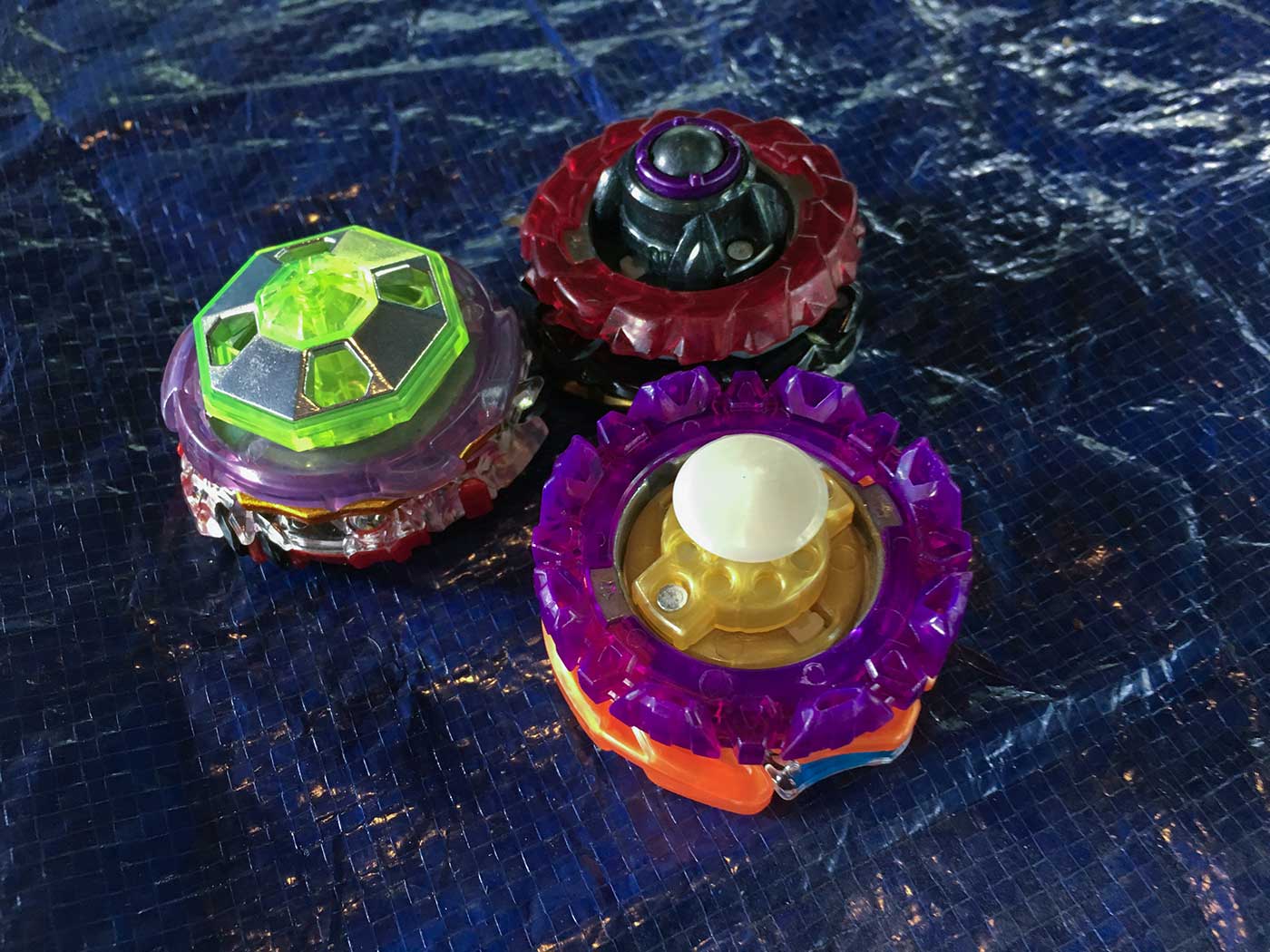
Tempest546’s 3 Picked Beyblades
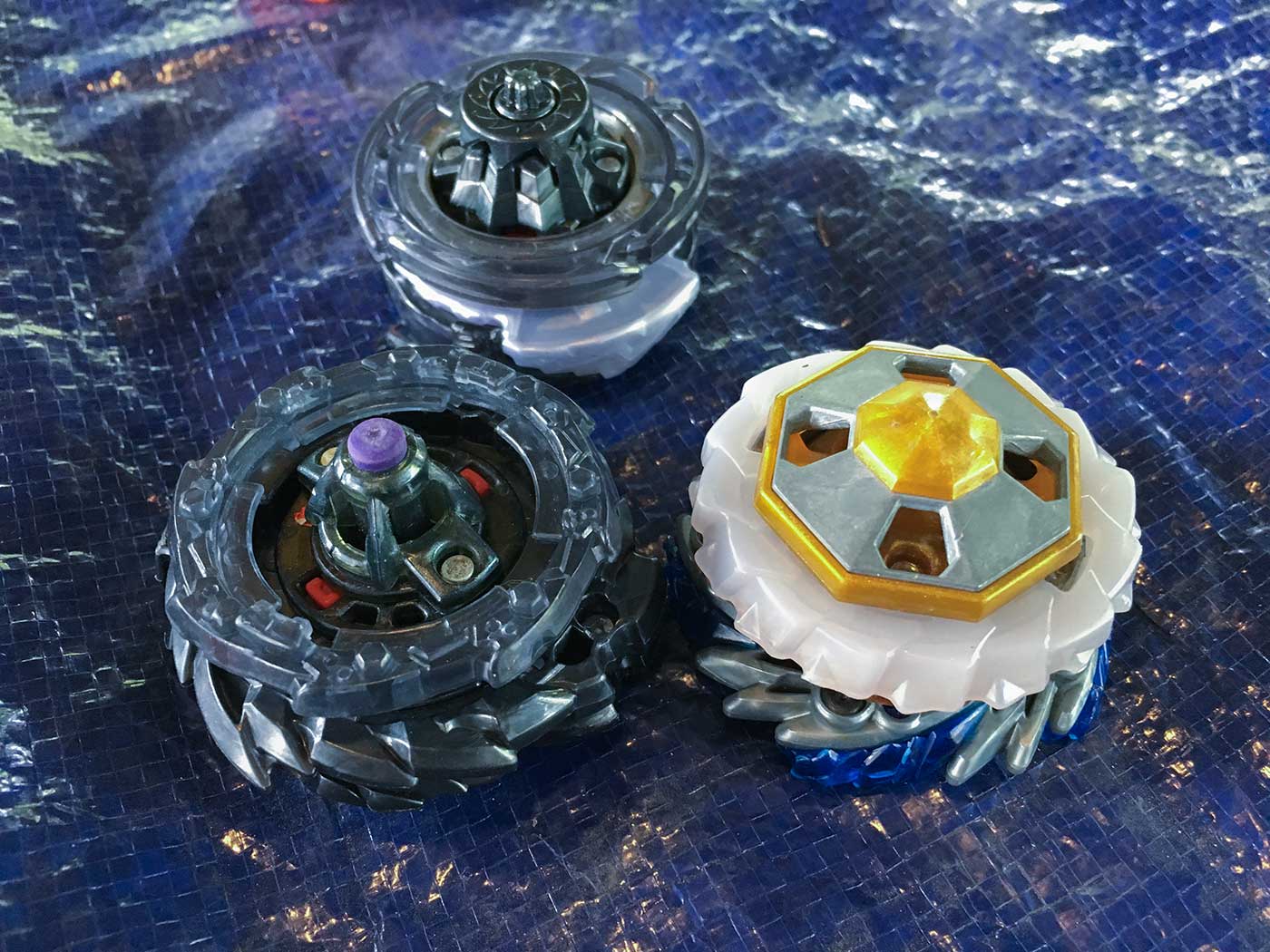
Kei’s 3 Picked Beyblades
Round 6 – Galaxy Zeus Ωuter Eternal (Smartsin the6) vs Drain Fafnir 0 Wall Bearing (Kei)
Smartsin the6 has been using Galaxy Zeus Ωuter Eternal for all of this matches.
Because I knew what he’d be using, I was able to hard-counter him using Drain Fafnir 0 Wall Bearing. I won 3-0.
General First Stage Observations
Win Condition Point Value Confusion
There was some confusion at first regarding the point values for each win condition in this format. This was not surprising and is an unfortunate byproduct of continuing to introduce new formats with differing win condition point values. Some thought Burst Finishes were worth 2, some thought it was 1 (it’s 1). We had to re-do a few matches once this was noticed.
The general reaction to it being 1 point among participants was negative.
The result of it being one allows for Beyblades with lower burst resistance to become more competitive and it lowers the viability of attack types, which have comptitive synergy with the burst-resistance increasing Dash Drivers. That said, attack doesn’t seem useless by any means.
I’m undecided on my feelings towards this, but would love to see it played with Burst Finishes being worth 2 points in this experimental phase.
Players Not Realizing The Tournament Format
Unfortunately, Smartsin the6 didn’t realize it was a BSL tournament.
One of the problems with any type of limited format with such a niche appeal is that you’ll often have people attend who didn’t notice the restrictions in place.
So, we had to find a way to lend him something to use. Technically, lending parts is not allowed at the moment due to COVID-19 but we didn’t want him to go home because of that so we figured giving him just one combo to play with for the tournament with no further lending would be OK. 1234beyblade put Galaxy Zeus Ωuter Eternal together for him, we sanitized it, and then he proceeded to make the finals!
Hazard Kerbeus
BladerBeast was able to demonstrate the surprisingly high stamina of Hazard Kerbeus even on Quick’ in some of his matches. Against henwooja1 he was even able to tie and OS Drain Fafnir on a Driver (I think Atomic?) which typically should have higher LAD than Quick’ in a couple rounds.
Deep Chaos
This Layer has some of the highest stamina in the format, yet it didn’t appear in battle at all from what I saw. BladerBeast did typically include it in his deck, though. I had it in my case, but it never felt right to pick given the strong attack types which exist in the format. However, with Burst Finishes being worth only 1 point in the first stage currently, maybe it would’ve been OK.
Hasbro Part Usage
Hasbro wasn’t as prominent in this event as I had seen in other Burst Limited Format events so far, but that might be because the Toronto community has always generally leaned more towards Takara-Tomy releases.
I did include Fafnir F3 in my deck several times though, but never used it. Nevertheless, make no mistake: there are many competitive Hasbro parts in this format.
Top Attack Layer Choices
Nightmare Longinus, Bloody Longinus, and Buster Xcalibur seem to be the most popular attackers so far in the format.
Bridging the Competitive Gap Between Takara-Tomy and Hasbro’s Beyblade Burst Products
Burst Limited Format fits into such an interesting spot because it gives not only the older Beyblade Burst God parts a chance to shine again, but also some Beyblade Burst Cho-Z parts such as Shining αmaterios which were previously effectively useless upon release for competition. And a lot of Hasbro’s Turbo and Rise releases that are in the general same weight class.
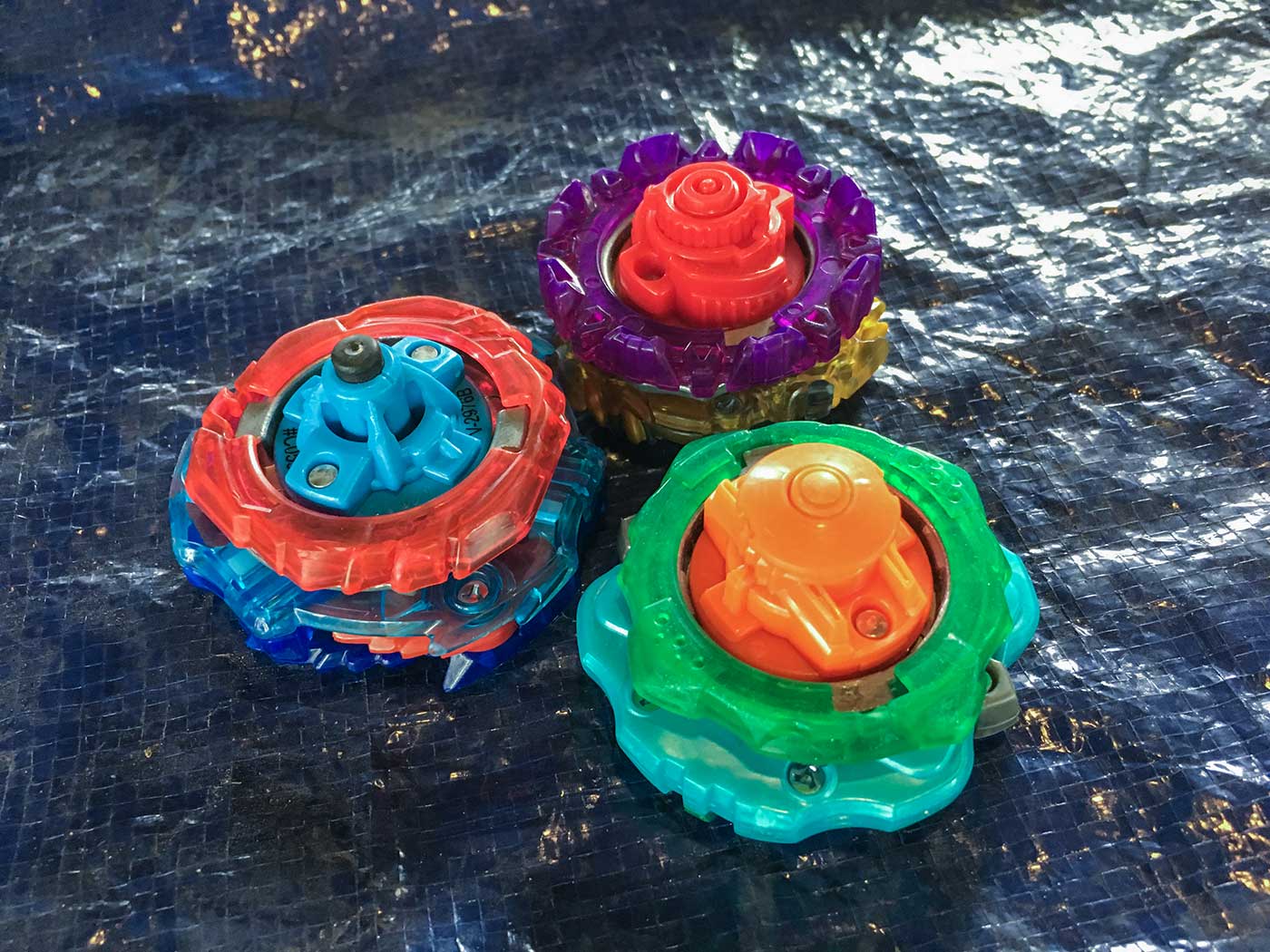
Takara-Tomy and Hasbro’s decisions to make their iterations of Beyblade Burst so vastly different placed the international competitive Beyblade community in an extremely tough position.
It makes me wonder how much they are actually interested in making Beyblade a competitive, global game.
In the past Takara-Tomy employees have talked about how Beyblade is a game which can unite people around the world across different cultures, which is true; they’ve proven it with their product and the World Beyblade Organization has proven it through our existence over the past 12 years.
And while I understand that there is likely other demographic, cost, and business-related reasons for why in this generation particularly the decision was made for Hasbro’s iteration of Beyblade to diverge immensely from Takara-Tomy’s, the unfortunate result is that it actually divides the community and makes it harder for communication and competition across cultures and borders to occur.
Takara-Tomy and Hasbro were even forced to use only Hasbro Beyblades in the official 2018 World Championship because of this.
Beyblade is a toy at the end of the day, and there’s nothing wrong with treating parts of the line like that.
But over the past two decades, it’s pretty clear that a deeper more competitive level of the game exists. Playing the game on this level is where real bonds and understanding is formed across cultures, so it should be protected and promoted.
It’s frustrating as a fan how Beyblade Burst has been treated in different regions, but looking at what has been done with Burst Classic and Burst Limited so far is quite inspiring.
The WBO community has been able to come together to devise a method of play which successfully bridges the competitive gap that Takara-Tomy and Hasbro regrettably imposed.
Top 3 Popular Beyblade Burst Limited Format Parts During Justin Thunder Cloud’s Skateboarding Adventure
There were many popular parts throughout this tournament that you can read about throughout this report, but here I’d like to highlight three of them which stood out to me.

Sponsored: Order the newest Beyblades at malloftoys.com!
Heads up: If you buy something through Mall of Toys, you won’t pay any extra, but I’ll get a small commission. This helps me keep things running. Thanks for your support!
Geist Fafnir – Beyblade Burst Cho-Z
How was it used?
The Geist Fafnir Layer saw use on a variety of Beyblade combos throughout the tournament. It was used on Drivers like Orbit Metal and Bearing in the first stage and Destroy’ in the finals.
Verdict
Geist Fafnir is a heavy Layer with decent stamina and good defense.
If you’re looking for a more defensive alternative to something like Drain Fafnir and don’t mind giving up some same- and opposite-spin stamina potential, gF can work well. It stands up much better to left-spin attack threats like Nightmare Longinus than Drain Fafnir typically can.
For further insight, you can also find some testing on this Layer here in this thread on the WBO.
Where to Buy the Geist Fafnir Layer
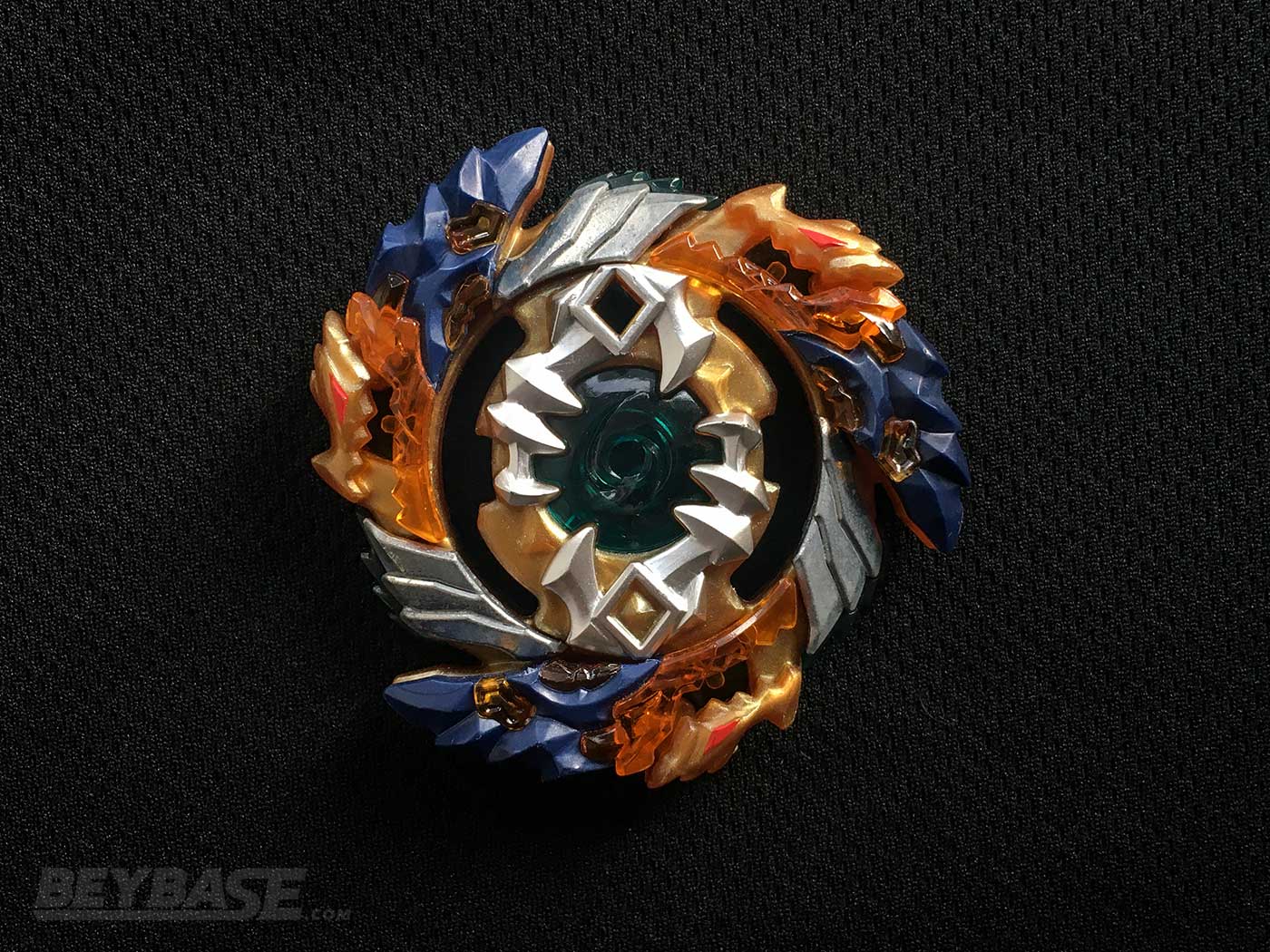
Heads up: If you buy something through some of the links on this post, you won’t pay any extra, but I’ll get a small commission. This helps me keep things running. Thanks for your support!
Buster Xcalibur – Beyblade Burst Cho-Z
How was it used?
Buster Xcalibur didn’t end up making it to the top three winning combinations list you’ll find at the end of this report, but it was certainly present throughout the first stage as a threat in several players three selections for the Pick 3, Choose 1 Battle Format.
It was typically seen on Xtreme’ and Evolution’.
Verdict
Although not chosen for battle frequently at this event, the fact remains that Buster Xcalibur is one fo the best right-spin pure attack options in the format. It’s heavier than most opponents it can face (and this can be further enhanced by using a Level Chip with it) and can pack quite a punch when used on fast Drivers.
Where to Buy the Buster Xcalibur Layer

Heads up: If you buy something through some of the links on this post, you won’t pay any extra, but I’ll get a small commission. This helps me keep things running. Thanks for your support!
Galaxy Zeus – Beyblade Burst God
How was it used?
Galaxy Zeus was used primarily on Atomic, Ωcta, and Eternal throughout this tournament.
Verdict
It’s been so long since I’ve played with Galaxy Zeus myself. It’s always been a Layer right on the egde between being useful and useless.
It originally came out in the summer of 2017 and was briefly popular on Atomic, but quickly fell out of use.
You can read a bit more about how it was used and viewed back then in the Galaxy Zeus Discussion thread on the WBO.
But in this event, despite its relatively poor burst resistance, because of its strong stamina and the fact that Burst Finishes were worth only one point, it was able to pull out many victories for both Tempest546 and Smartsin the6.
However, I’m not too sure whether it makes sense to use it over something like Hercules H4 on Atomic/Atomic-S in this format.
Where to Buy the Galaxy Zeus Layer
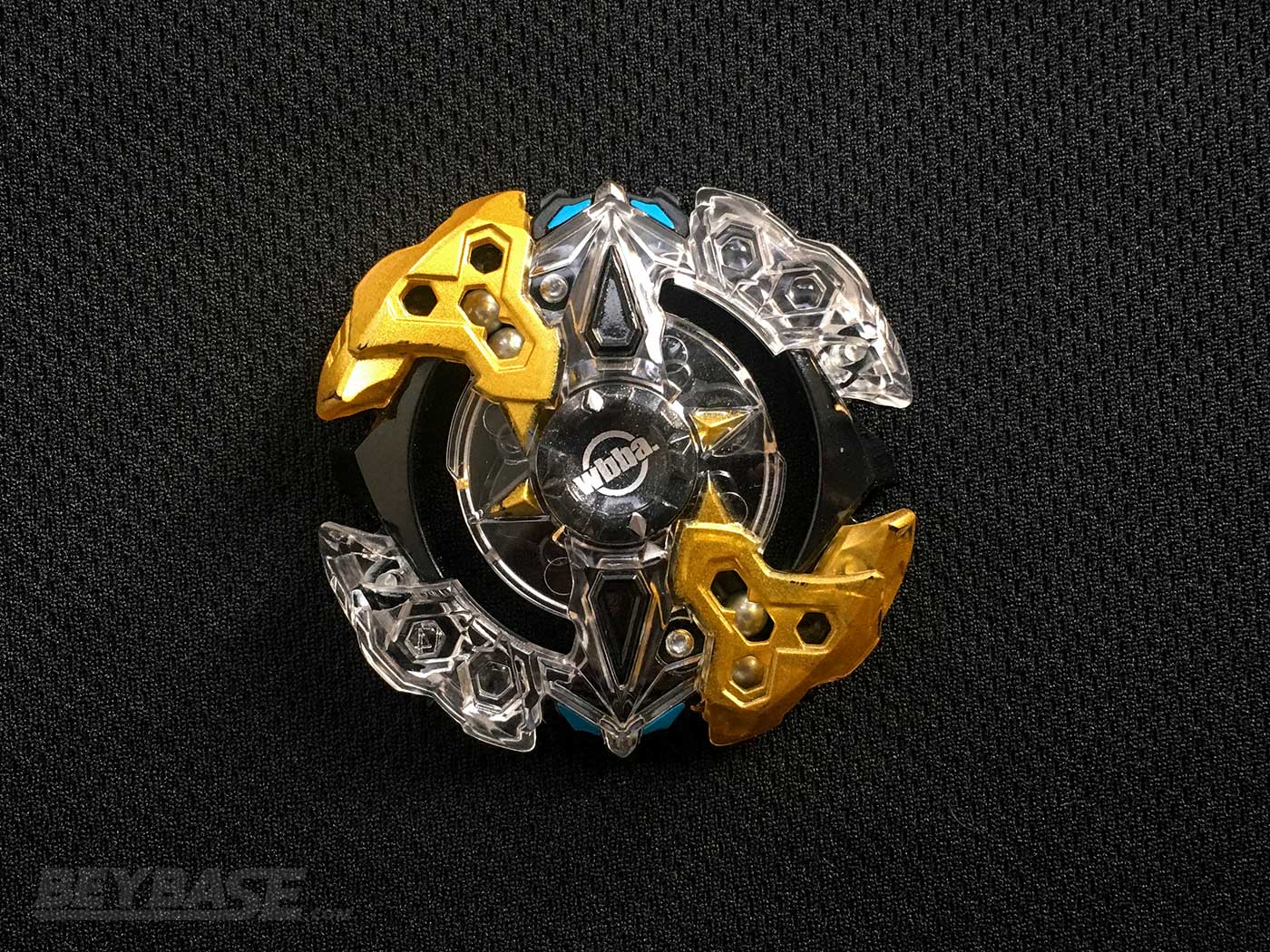
Heads up: If you buy something through some of the links on this post, you won’t pay any extra, but I’ll get a small commission. This helps me keep things running. Thanks for your support!
Final Stage Report – Justin Thunder Cloud’s Skateboarding Adventure
Matches in the finals were played with WBO Deck Format, which requires five points to win.
Finalists
-
Tempest546 (4-2)
-
Smartsin the6 (3-3)
-
Kei (3-3)
-
BladerBeast (3-3)
Burst Finish Point Value Mistake
We admittedly made a mistake here and continued with the one point Burst Finish from the first stage.
But nevertheless, it was an unranked event and ultimately demonstrated to me that it probably would be a better idea to keep the point values for each win condition consistent between the First and Final stages of events.
I can understand the argument why you might want the point values to differ across formats such as Burst Format versus Burst Limited Format.
Two point Burst Finishes in the standard format make sense because bursting is so much more difficult.
One point Burst Finishes make some sense for Burst Limited Format because bursting is easier.
But changing the values between each stage seems unnecessarily complex.
Semi-Finals: Kei vs. Smartsin the6
This battle was pretty straightforward as Smartsin the6 only had Galaxy Zeus Ωuter Eternal available.
I went up 4-0 with Drain Fafnir 00 Wall Bearing, switched to Twin Nemesis Ωuter Zephyr’ for fun, lost, and then closed it out with Drain Fafnir for a 5-1 victory.
A little bit lucky that this was my match-up, but I’ll take it!
Kei’s Deck
- Twin Nemesis Ωuter Zephyr’
- Drain Fafnir 00 Wall Bearing
- Shadow αmaterios (Level Chip) Ωuter Revolve
Smartsin the 6’s Deck
- Galaxy Zeus Ωuter Eternal
Semi-Finals: BladerBeast vs. Tempest546
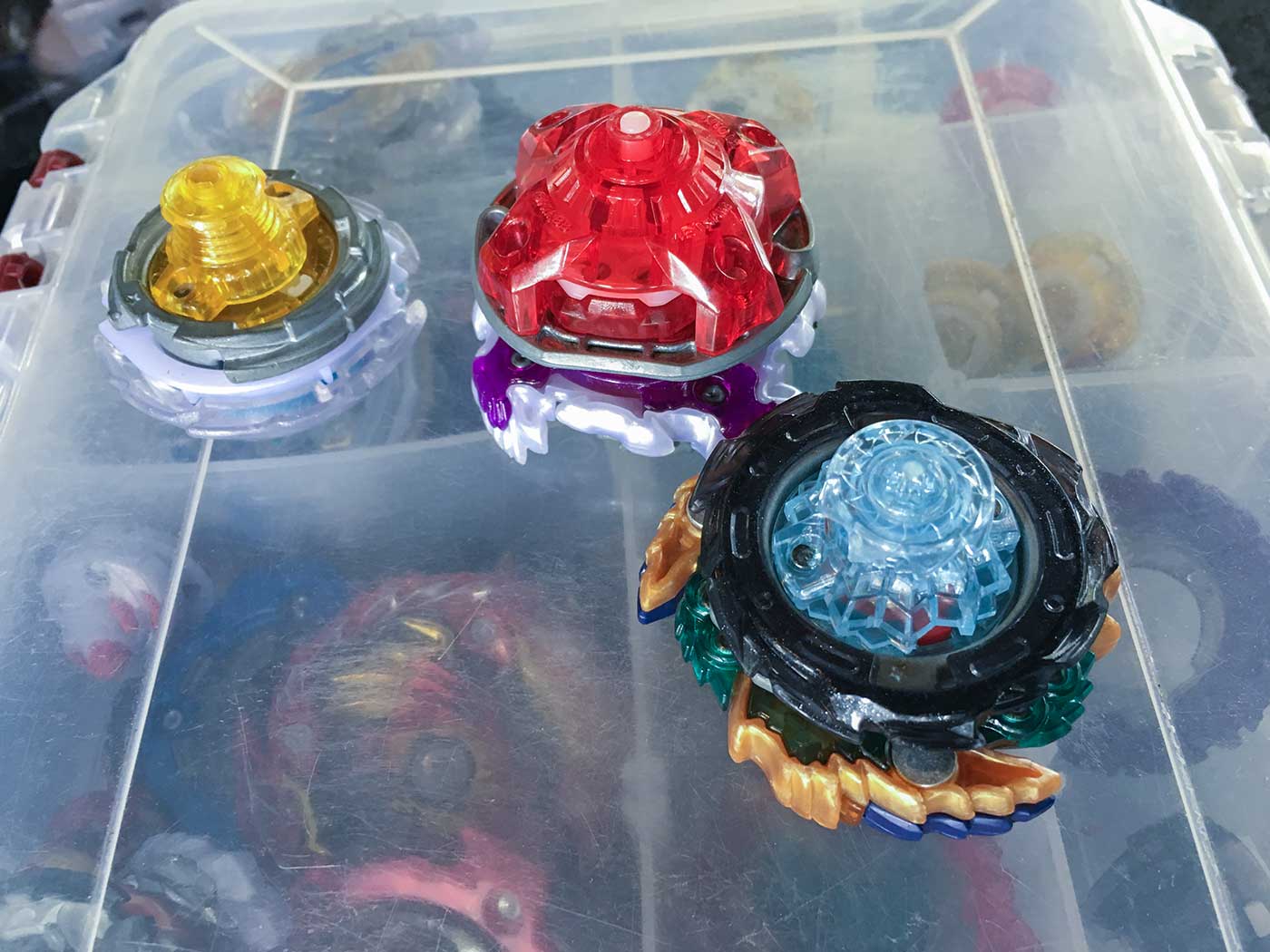
BladerBeast’s Deck
- Deep Chaos 0 Revolve
- Bloody Longinus Generate
- Geist Fafnir 10 Flow Destroy’
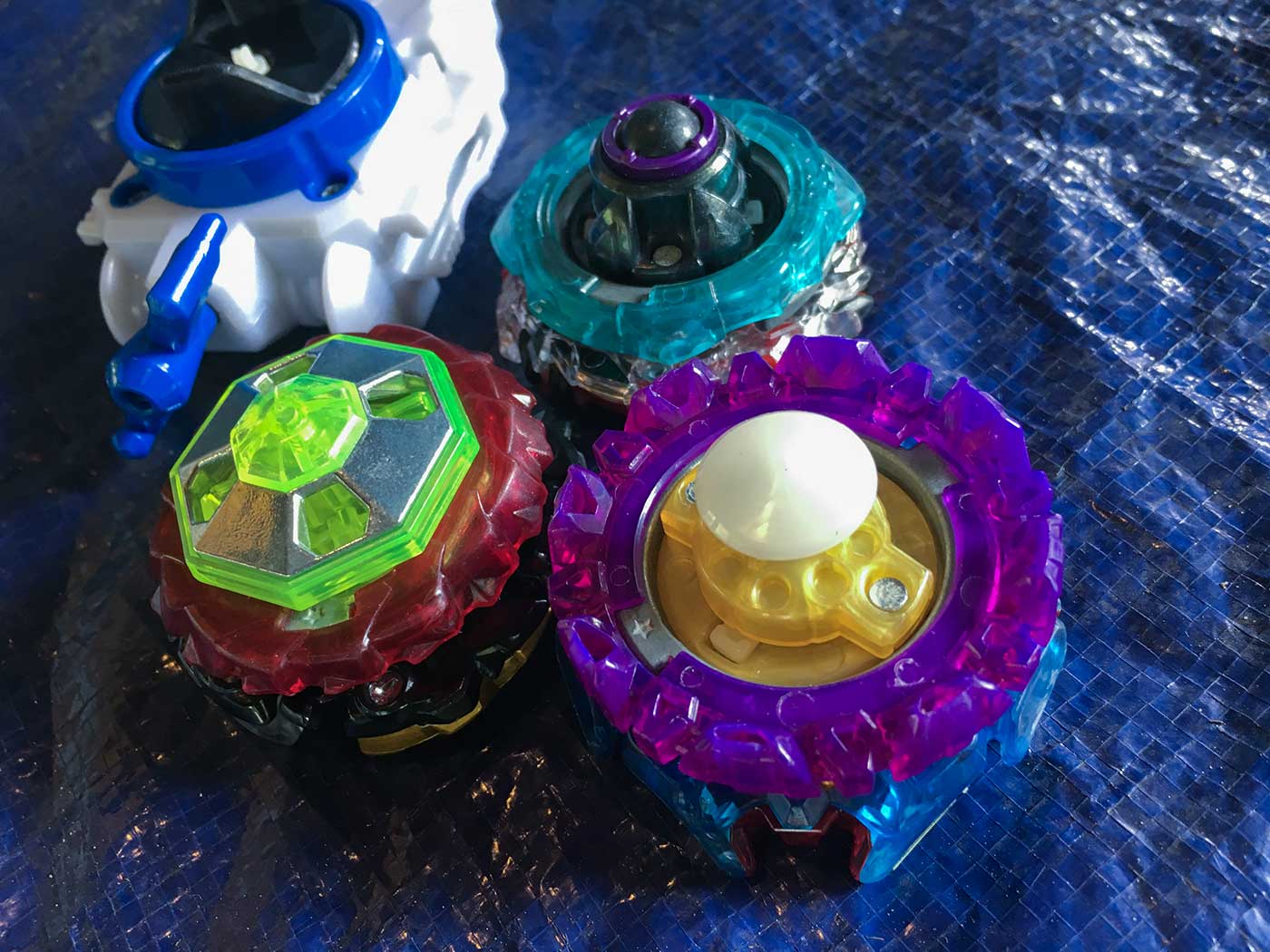
Tempeat546’s Deck
- Galaxy Zeus 00 Bump Ωcta
- Sieg Xcalibur ? Wall Bearing
- Drain Fafnir ? Cross Atomic
Battle Video
Final Match: Kei vs. BladerBeast
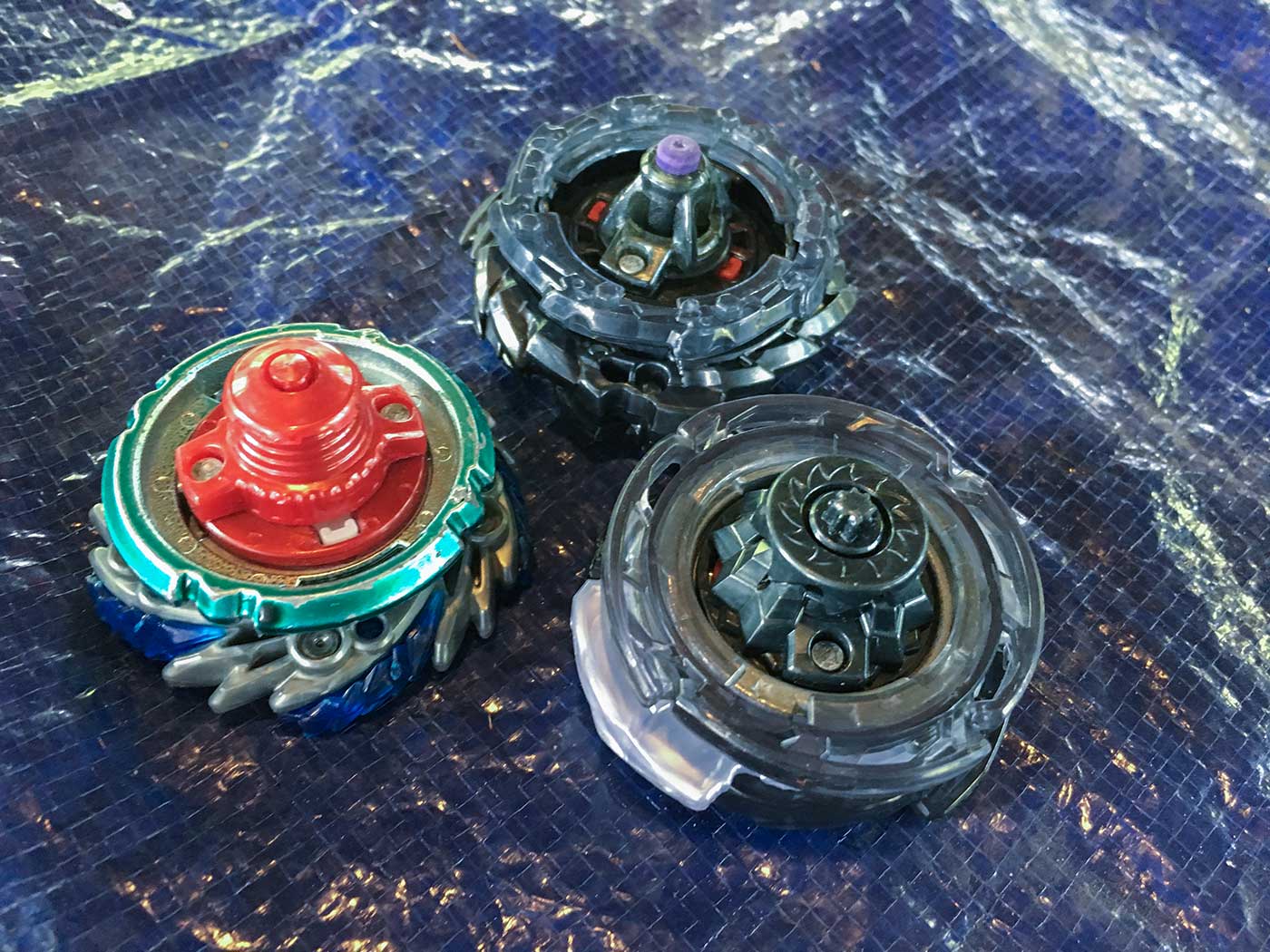
Kei’s Deck
- Shadow αmaterios (Level Chip) Ωuter Revolve
- Nightmare Longinus Turn Xtreme’
- Twin Nemesis 0 Expand Destroy’

BladerBeast’s Deck
Same deck as his semi-final match.
- Deep Chaos 0 Revolve
- Bloody Longinus Generate
- Geist Fafnir 10 Flow Destroy’
Deck Building Thought Process
BladerBeast had been leaning heavily on including Bloody Longinus Generate and Deep Chaos 0 Revolve in his selection of three Beyblades during the first stage P3C1 battle format. I expected that to continue.
I wasn’t sure what his third Beyblade would be. He had found success with Hazard Kerbeus 00 Bump Quick’ in the first stage against henwooja1, but had also included some left-spin Destroy’ combos instead on a few occasions.
I decided to go with Nightmare Longinus Turn Xtreme’ as my primary attack type. It would likely have trouble against Deep Chaos, but I was confident it could defeat bL.Gn as well as have a chance against whatever his third Beyblade would be.
My second pick–Twin Nemesis 0 Expand Destroy’–had the potential to burst Deep Chaos, OS his third Beyblade if it was a left-spin Destroy’ combo, and potentially OS or KO bL.Gn.
In our first stage match, I had defeated his bL.Gn with this combo in a very close match as well, so this gave me some confidence.
Finally, I threw in Shadow αmaterios (Level Chip) Ωuter Revolve hoping that it would be able to OS bL.Gn, OS dC and stand a chance against hK.00B.Qc’ if he chose it due to the heavy weight and good burst resistance of sα.
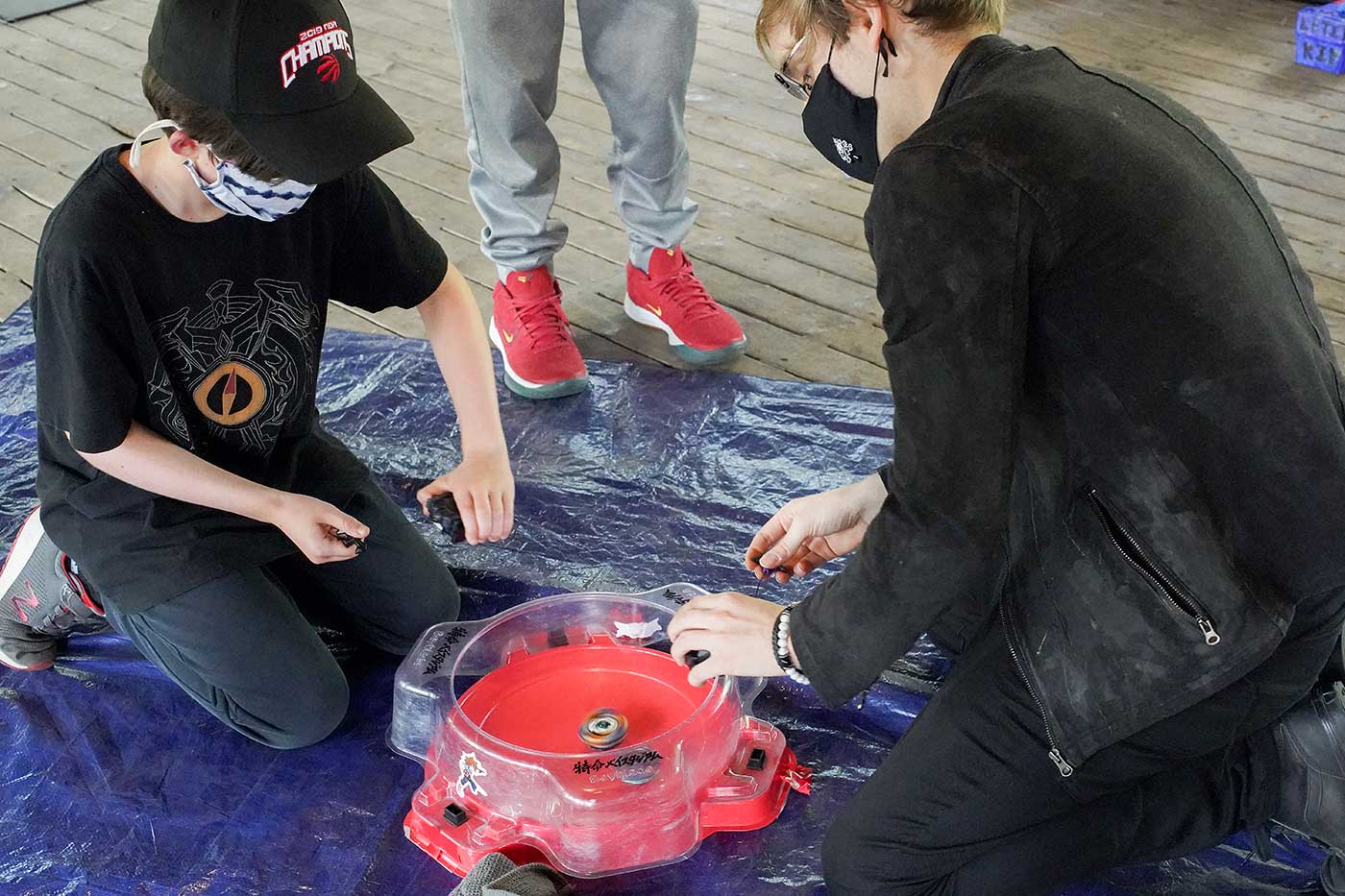
The Match
The battle was tightly contested.
I believe the match opened with LC sα.Ω.R vs. gF.10F.Ds’. We ended up splitting the match-up 1-1, with I believe some sort of launching error by BladerBeast helping me earn my one point with LC sα.Ω.R.
After this, BladerBeast was able to score some points with bL.Gn versus tN.0E.Ds’, to my surprise. I may have won one round with tN to BladerBeast’s two in this match-up.
At this point, I switched over to nL.T.X’ and was ultimately able to score several points versus his bL.Gn to secure the 5-4 win!
Playing to Win In the Here and Now
This tournament win felt really good.
In my Beyblade West report (under #2 in the “Self-Imposed Pressure” section), I talked about the idea of aiming for perfection versus aiming for a top three finish.
Which carries more value?
I decided that for myself, aiming for perfection–despite the pressure to do so from the WBO ranking system–was unfair and not representative of what I actually desire: winning tournaments.
This tournament demonstrated to me the spirit with which I’d like to continue approaching competitive Beyblade: thinking about how to get into the finals and top three of an event at all costs rather than worrying too deeply about maintaining a perfect record.
I was 3-3 after the first stage in this event, but it was good enough to get me to the finals. From there, anything can happen.
And typically, because it is a more skillful format, if you are skilled, you can excel.
Aiming for perfection ironically limits you mentally because the internal pressure to be perfect almost overtakes the importance of properly thinking through what will give you the best chance to win.
You worry about playing things in the safest way rather than the best way.
You play to protect a personal historical standard of performance rather than to help you win in the here and now, which is meaningful in and of itself.
Overcoming your fear of losing is the best way to ensure that you will be successful in the short term. And the byproduct of consistently being successful in the short term is you guessed it, long term success.
Tournament Winning Beyblade Combinations

1st: Kei
- Shining αmaterios 0 Lift Bearing
- Twin Nemesis 0 Expand Destroy Dash
- Drain Fafnir 0 Wall Bearing
- Nightmare Longinus Turn Xtreme Dash (Deck Format Finals Only)
- Shadow αmaterios (Level Chip) Ωuter Revolve (Deck Format Finals Only)
2nd: BladerBeast
- Hazard Kerbeus 00 Bump Quick Dash
- Geist Fafnir 10 Flow Destroy Dash
- Bloody Longinus Generate (Deck Format Finals Only)
3rd: Tempest546
- Galaxy Zeus 00 Bump Ωcta
- Galaxy Zeus 00 Bump Atomic
- Arc Bahamut 00 Bump Ωcta
- Sieg Xcalibur 0 Cross Revolve
How to Build the Winning Beyblade Combinations
Here’s what you need to build some of the strongest winning Beyblade Burst Limited combos from Justin Thunder Cloud’s Skateboarding Adventure:
Shining αmaterios 0 Lift Bearing
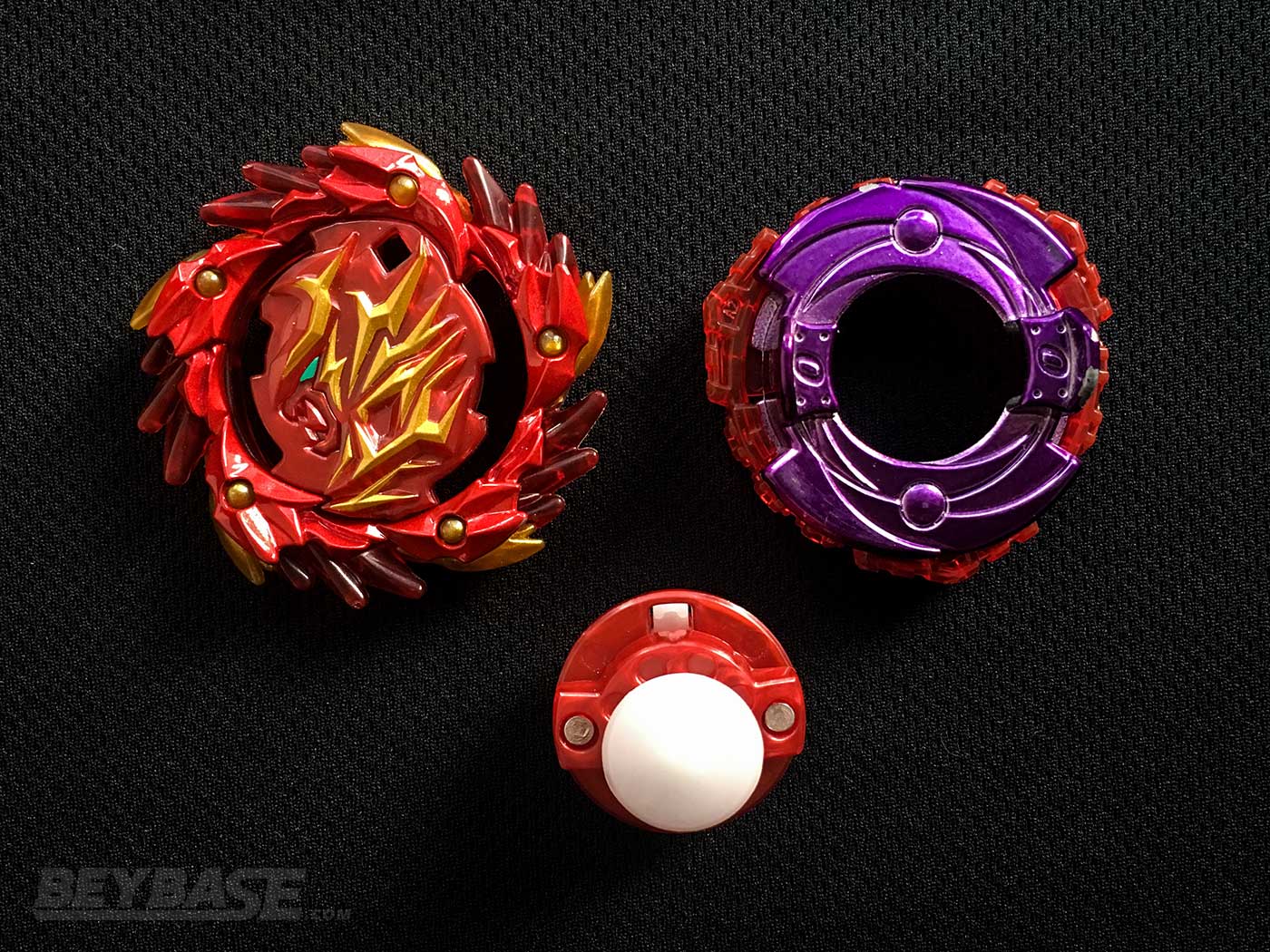
- Shining αmaterios:
- 0 (1 of the following):
- Lift (1 of the following):
- Bearing (1 of the following):
- B-00 Union Diabolos 00Expand Bearing (Super King Dragon Ver.) (wbba. Store Exclusive)
- B-121 Cho-Z Triple Booster Set – Wolborg 8 Bearing
- B-98 God Customize Set – Deep Chaos 4Flow Bearing
Twin Nemesis 0 Expand Destroy Dash
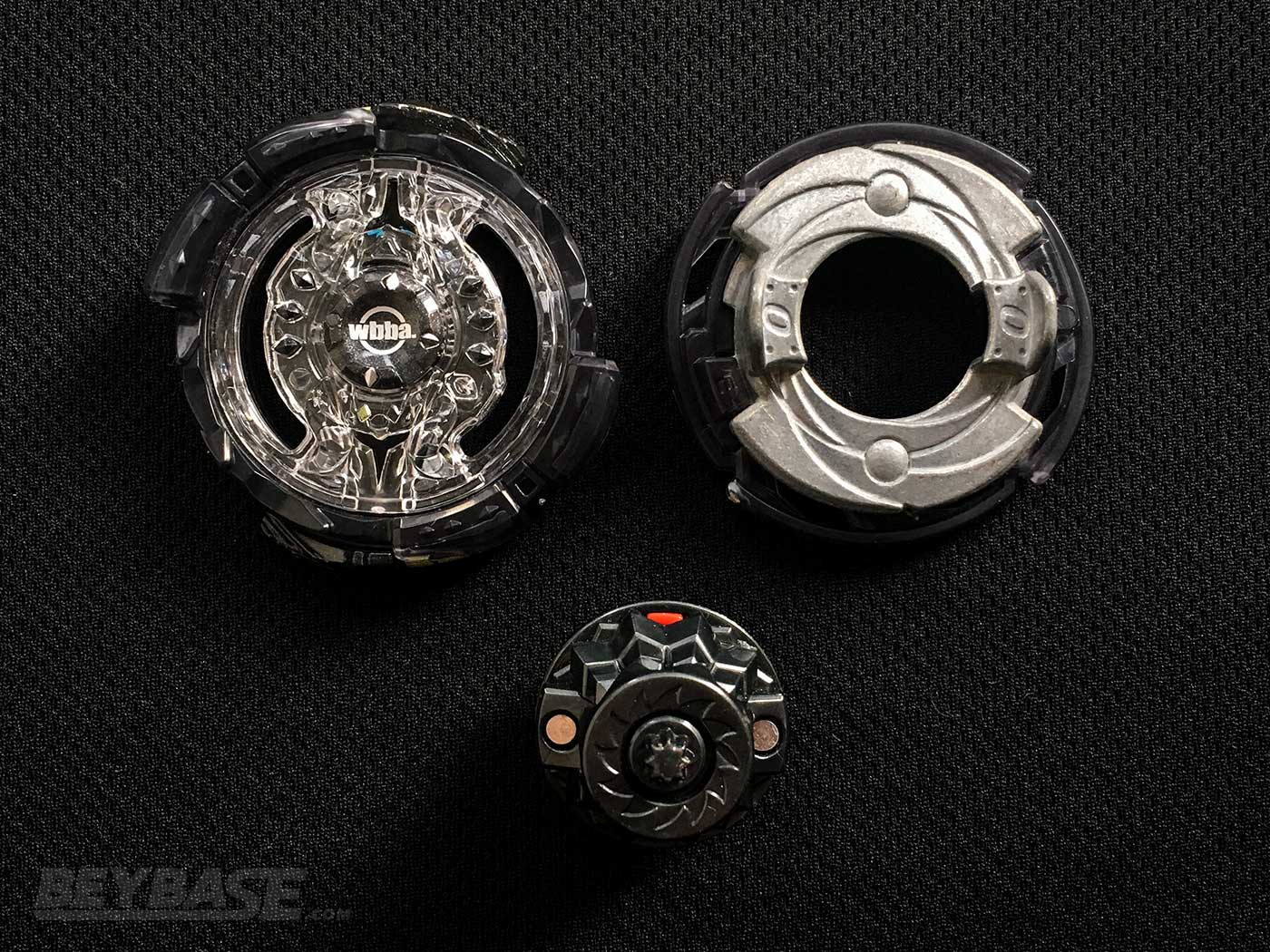
- Twin Nemesis (1 of the following):
- 0 (1 of the following):
- Expand (1 of the following):
- Destroy’:
Bloody Longinus Generate
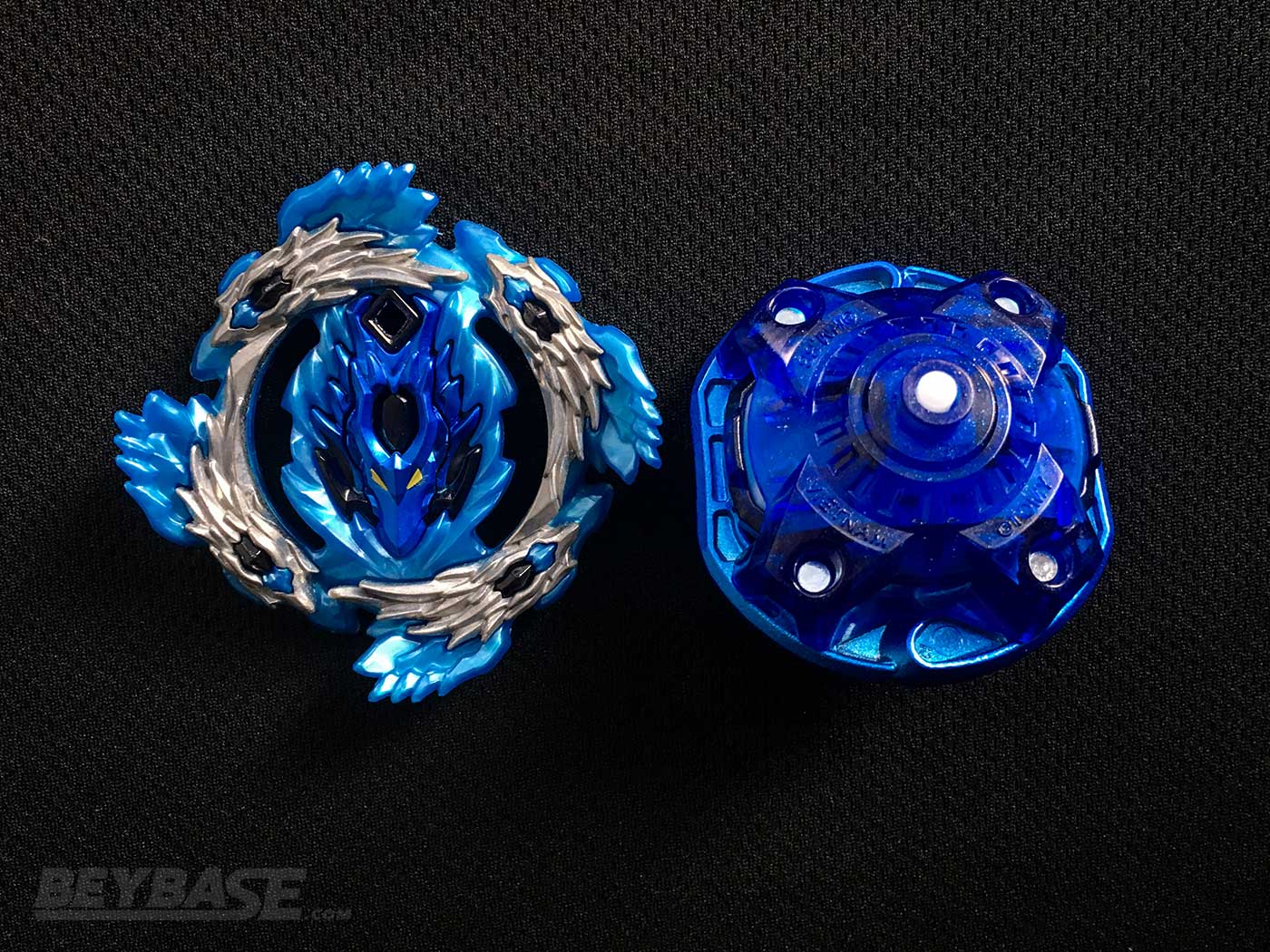
- Bloody Longinus (1 of the following):
- Generate:
Heads up: If you buy something through some of the links on this post, you won’t pay any extra, but I’ll get a small commission. This helps me keep things running. Thanks for your support!
Photo Gallery
Acknowledgements
Thank you to everyone who attended and helped to make this tournament a success!
Specifically, thank you to:
- henwooja1 for bringing tarps and a stadium.
- Justin TC for bringing a stadium and hosting!
- Tempest546 for shooting some photos
- All of our judges (1234beyblade, BladerBeast, Justin TC, henwooja1) for helping the tournament to run smoothly.
What do you think? Comment below!
I’d love hear what you guys think of the Beyblade Burst Limited metagame as it stands right now and the Pick 3, Choose 1 battle format whether you attended the tournament or not.
Comment below and let me know!
If you enjoyed reading this article, please also feel free to share it with any of your friends who are into playing Beyblade competitively or enjoy hosting tournaments.
8 thoughts on “Are Beyblade Burst Limited and Pick 3, Choose 1 the Best Formats? (WBO Tournament Report)”
Comments are closed.

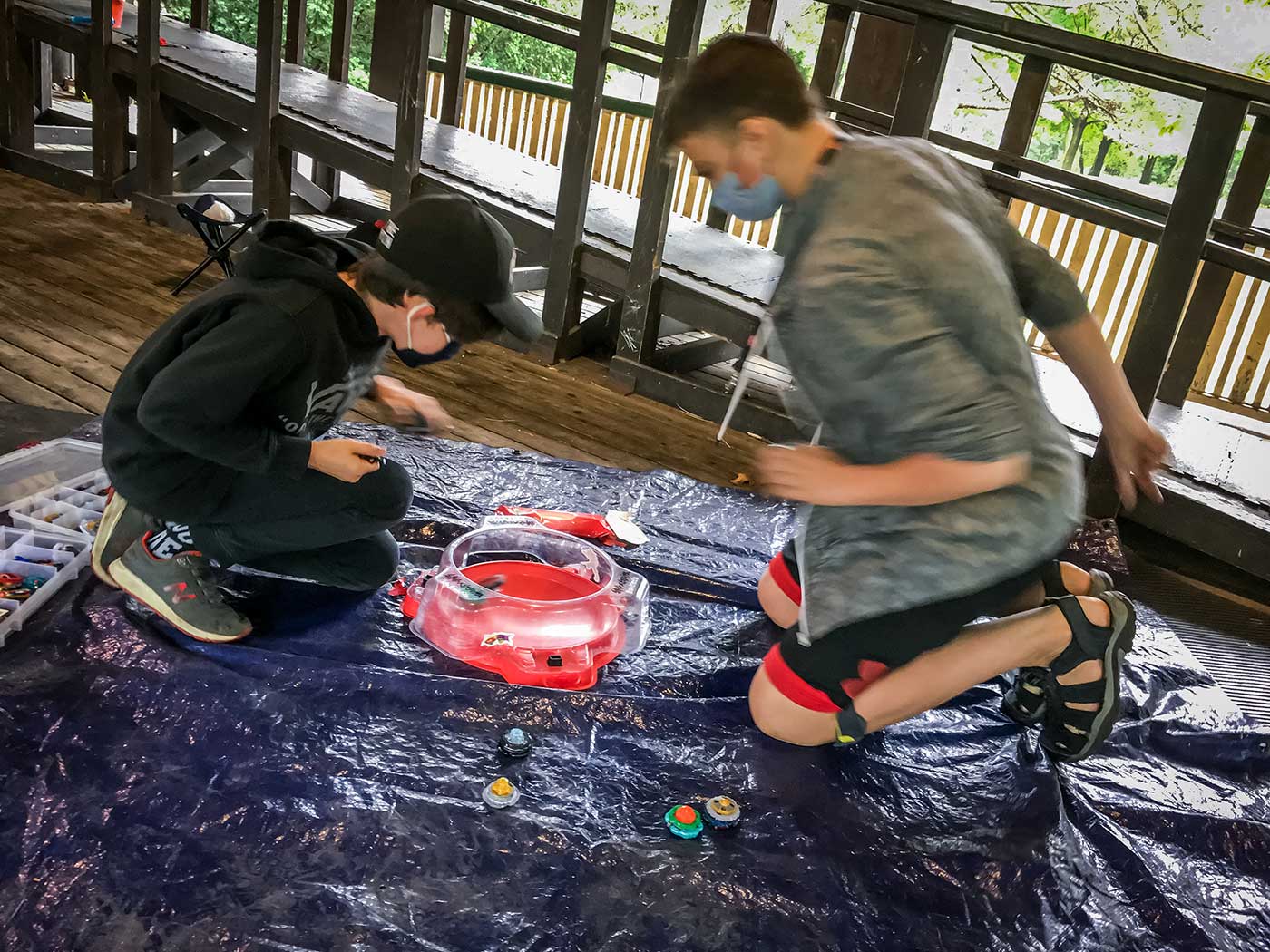

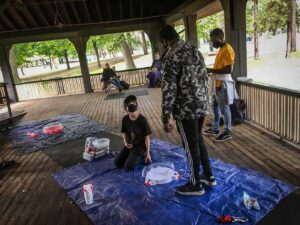
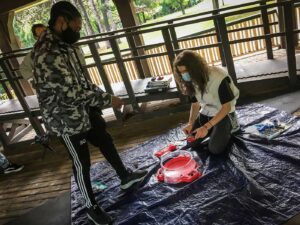




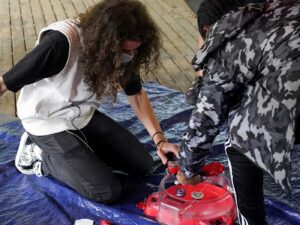
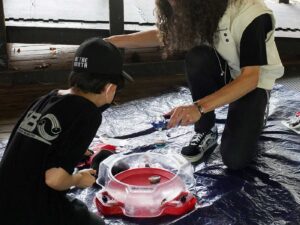

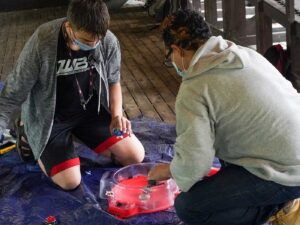
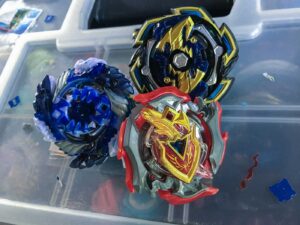
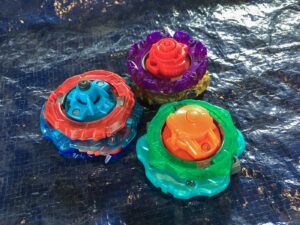
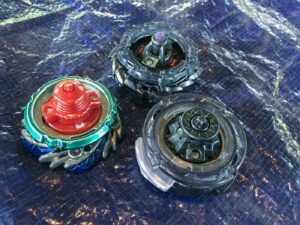
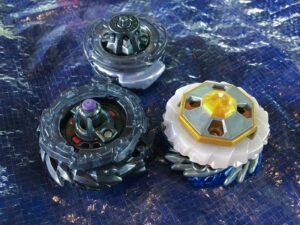
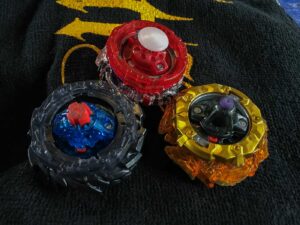
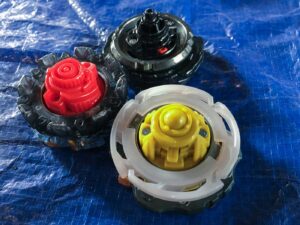
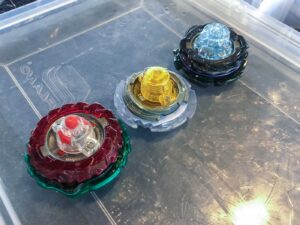
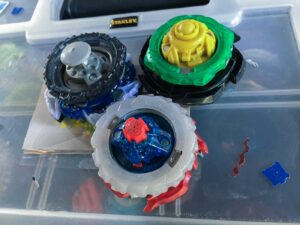
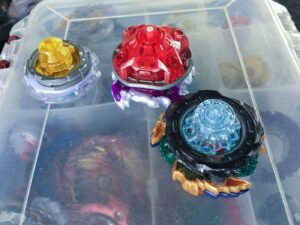
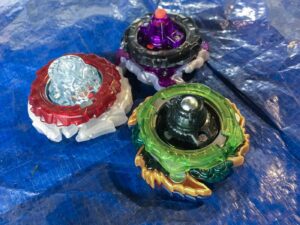
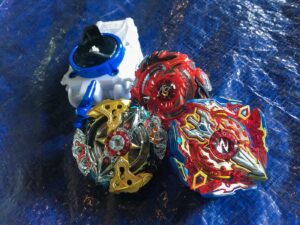
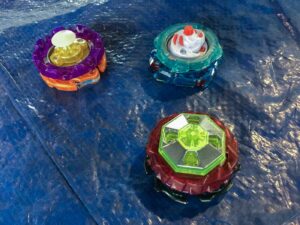
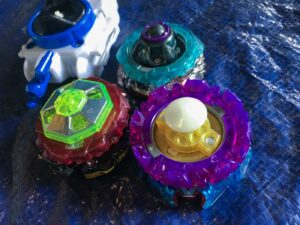
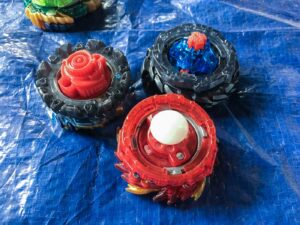
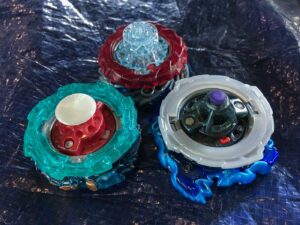
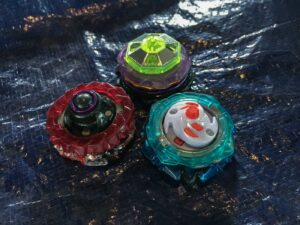
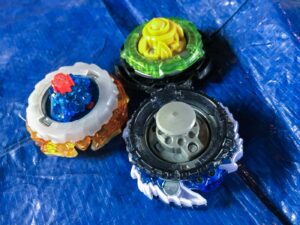
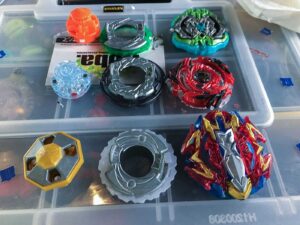
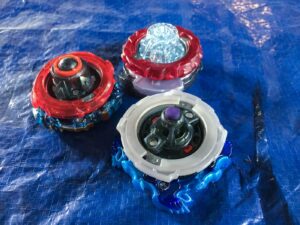
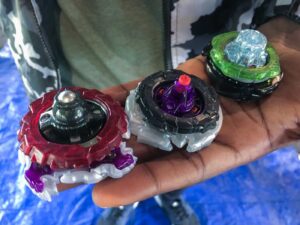
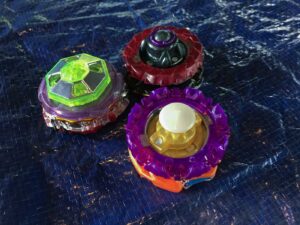
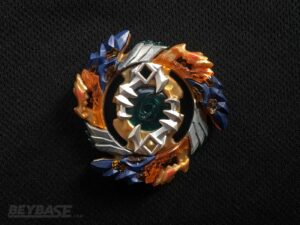
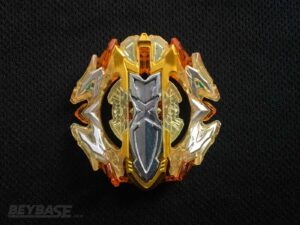

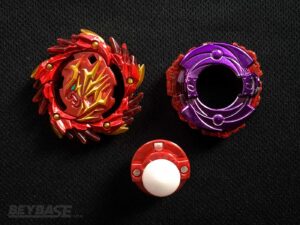

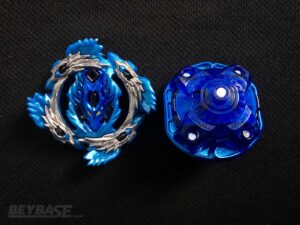
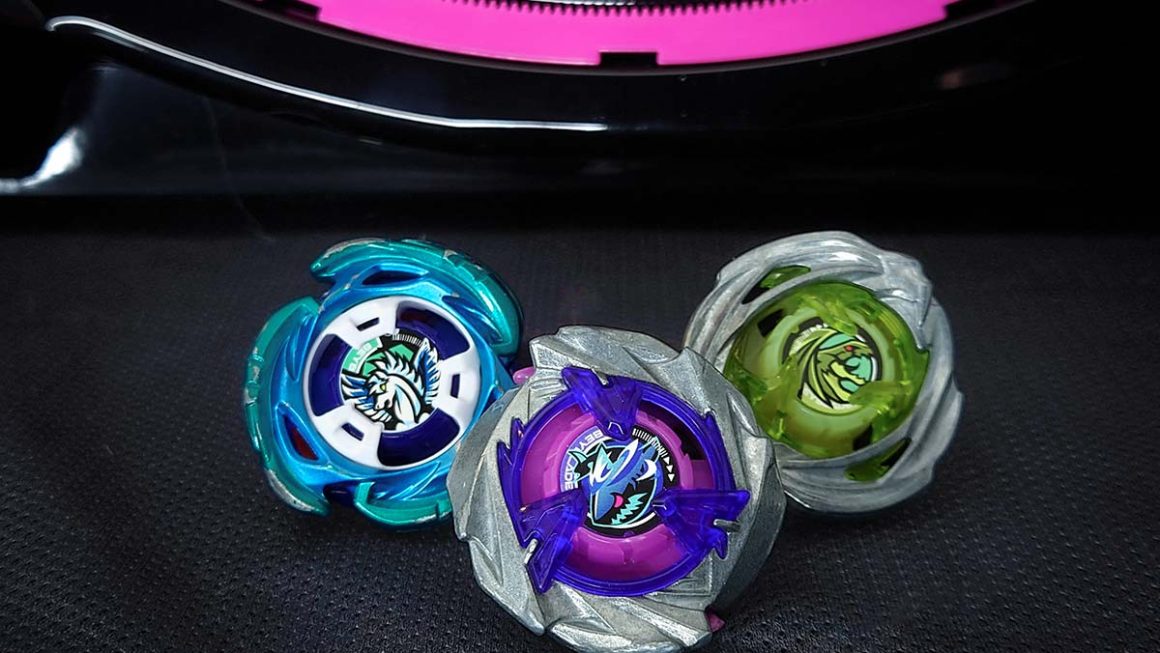
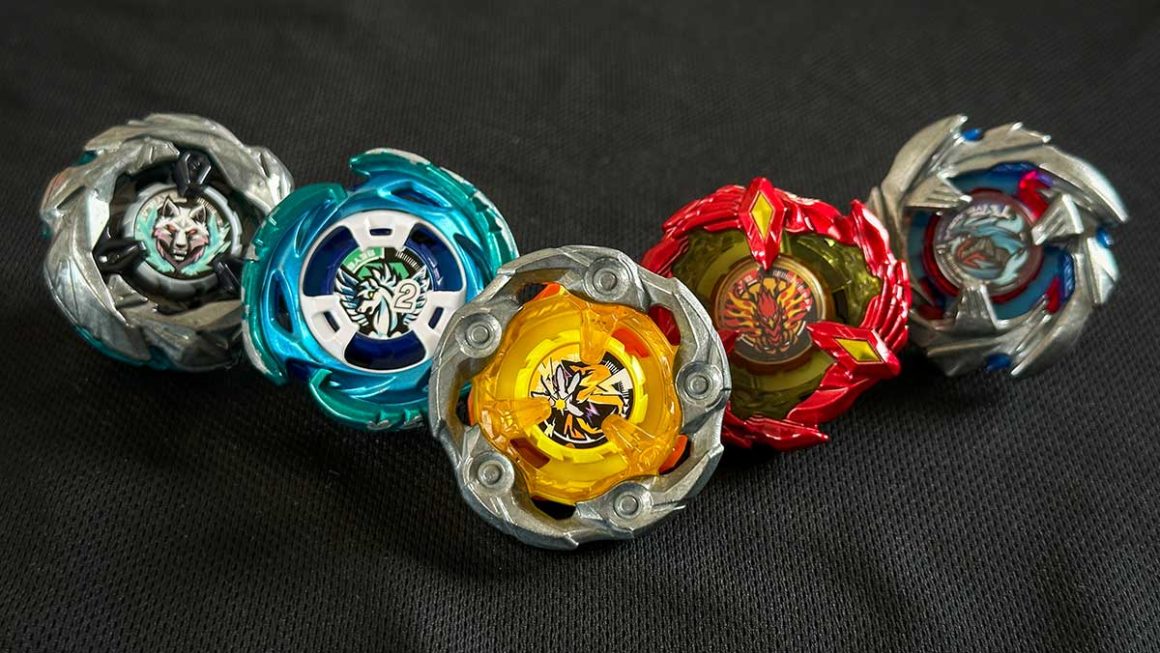
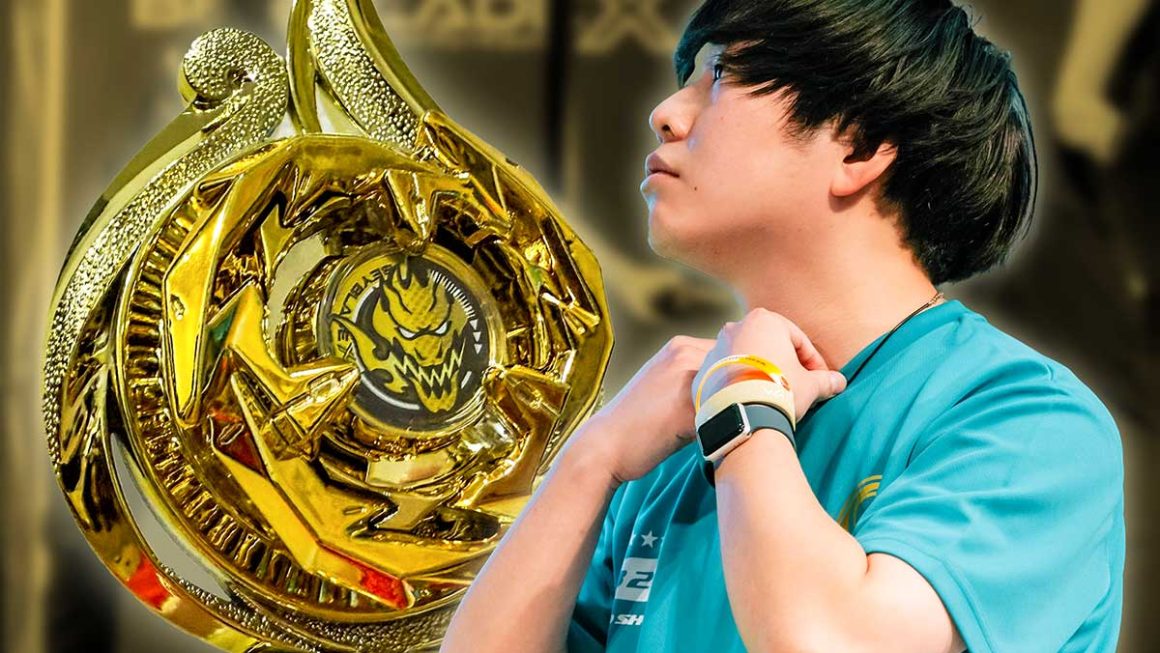
Great Article Kei! And was Tn used on Upper or Smash?
Great Article Kei! And was Tn used on Upper or Smash?
I think I was in upper mode.
Ok, so the difference between At and At-S goes as follows: At-S has a tighter spring and is way more free spinning, so it has better burst resistance. This makes At-S ideal for burst defense setups and high burst risk stamina beys. At on the other hand, due to the bigger ball, has more LAD and more stamina. This makes it slightly better in situations involving opposite spin and same spin, and I would put these on stamina/defense combos to add that extra bit of same and opp spin safety as At-S is often overkill on things like H4. At kinda acts like a soft counter to At-S since you can OS it if you have the same or a better setup with a same or better launch. I personally think that Ab-S is kinda the brother for At-S, trading defense for LAD and stamina. A really good combo in the first stage is F3.00C.Ab-S since most people aren’t running anything with this level of LAD, and if they are, they’re also using left spin and you will have the stamina advantage.
Never thought limited tournament were fun
Great article Kei! I saw Tempest546 use a Blaze Ragnaruk combo on Wall Bearing in his deck at some point. I know it wasn’t used, but is there any competitive use you see bR having that other stamina/defense types in the game don’t have? I had heard that bR was outclassed which is why I ask this.
Great Article! I thought in finals burst were 2 Points. BladerBeast burst him more than 2 times.
Glad they didn’t allow banana into this tourney (by banana I mean Garuda).